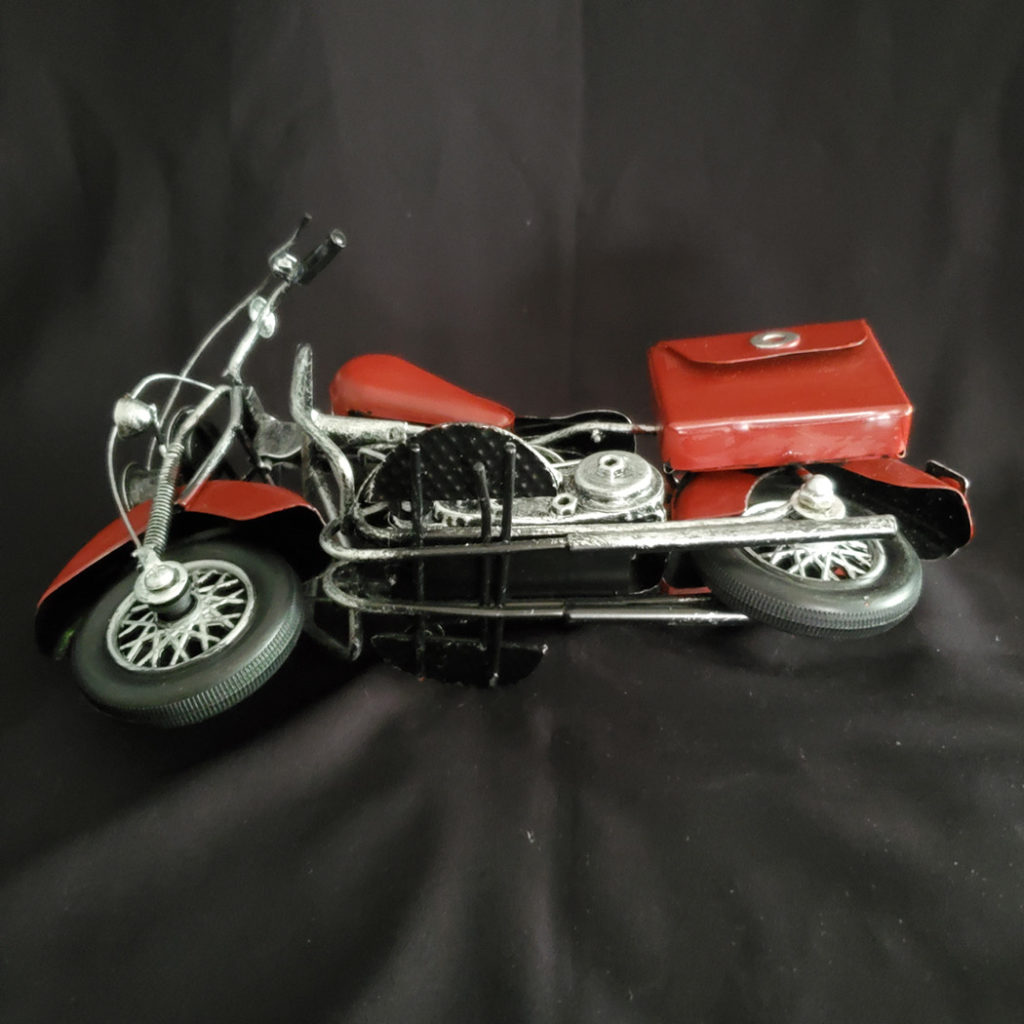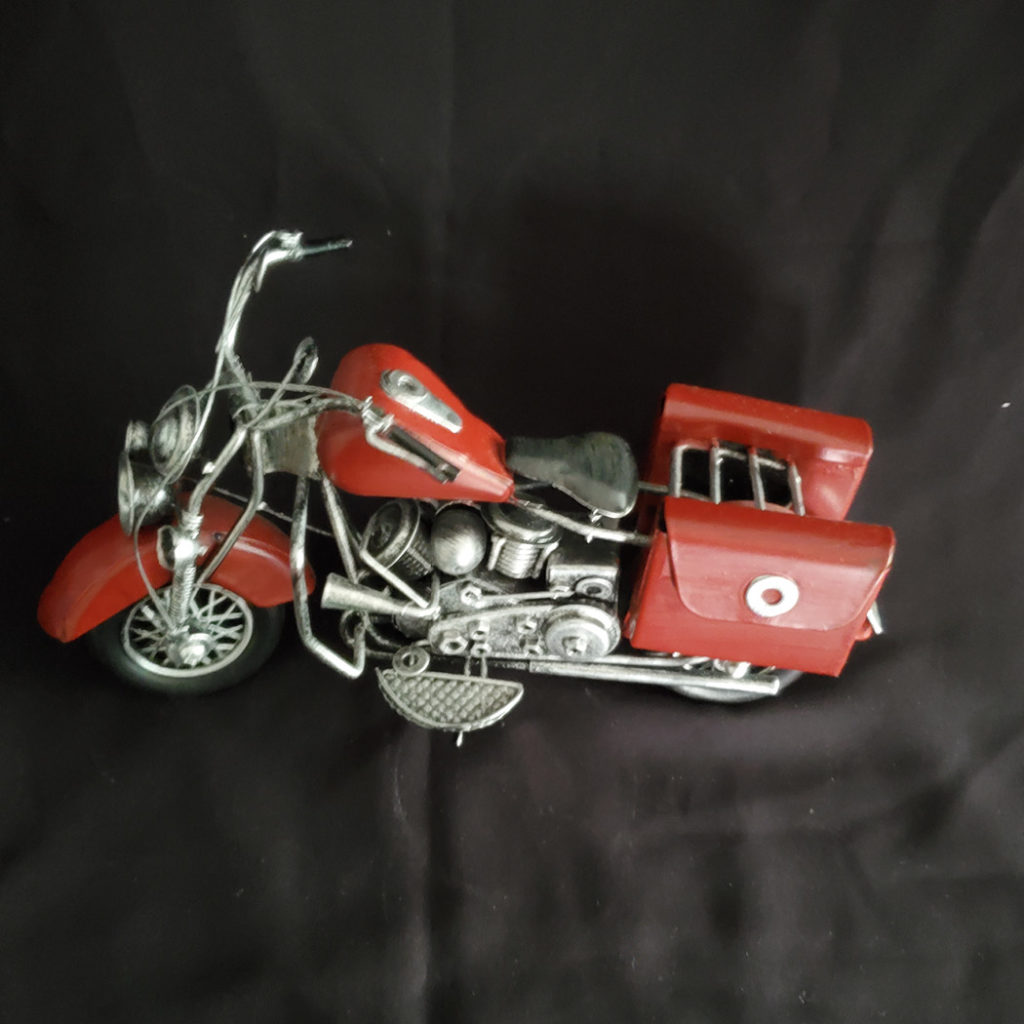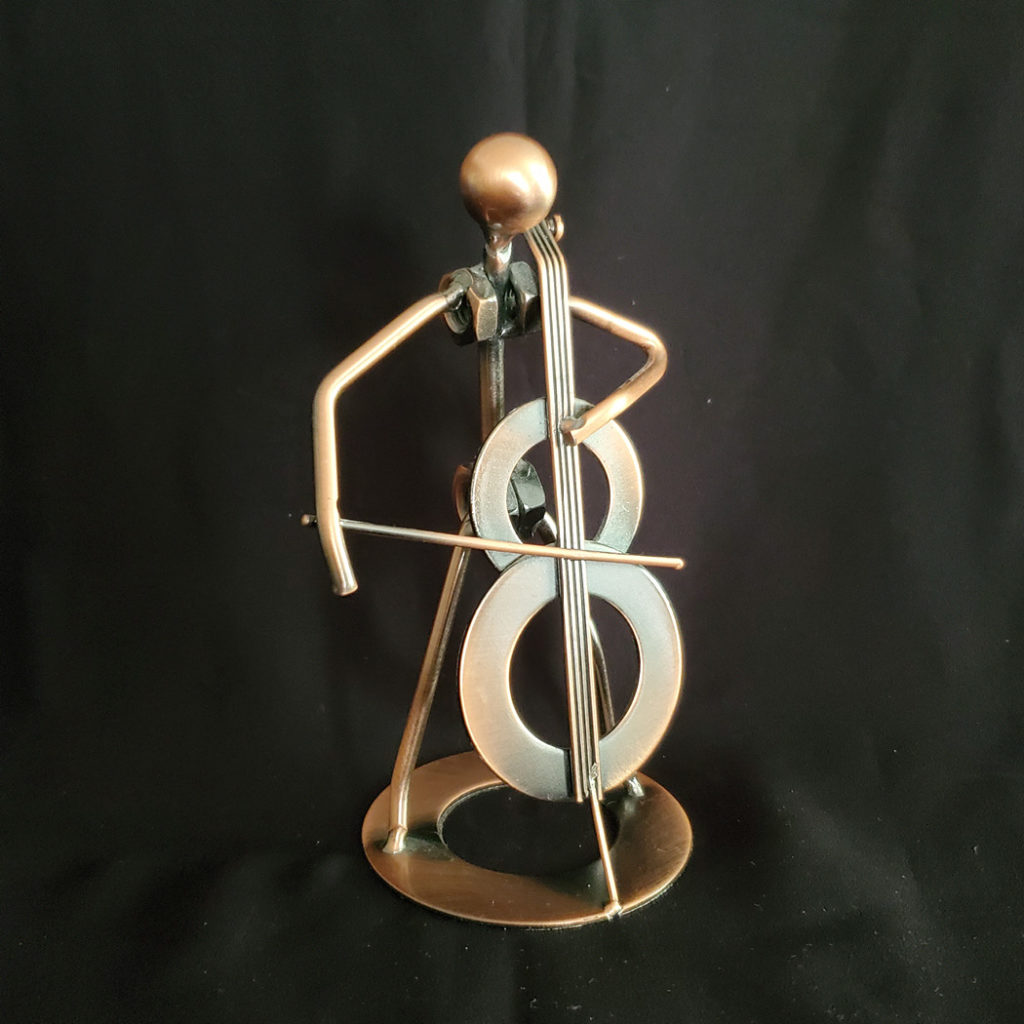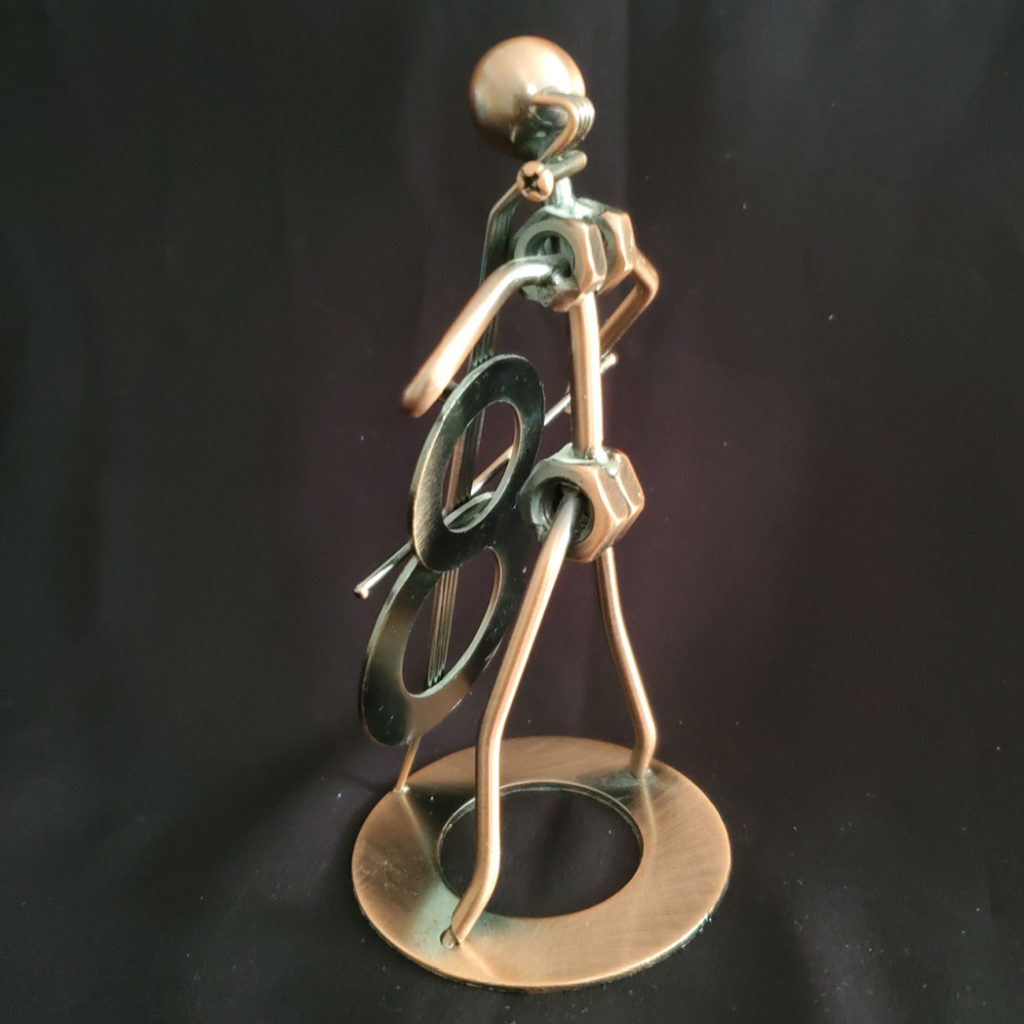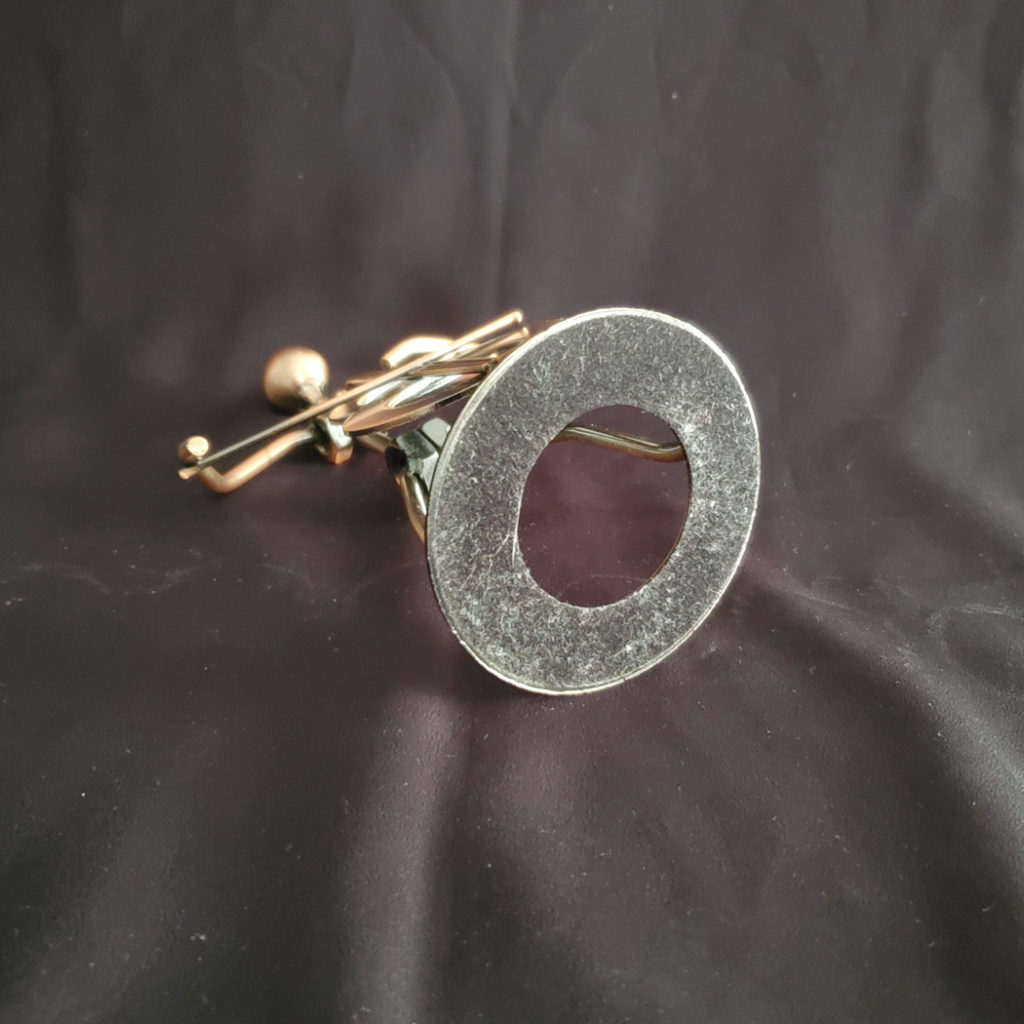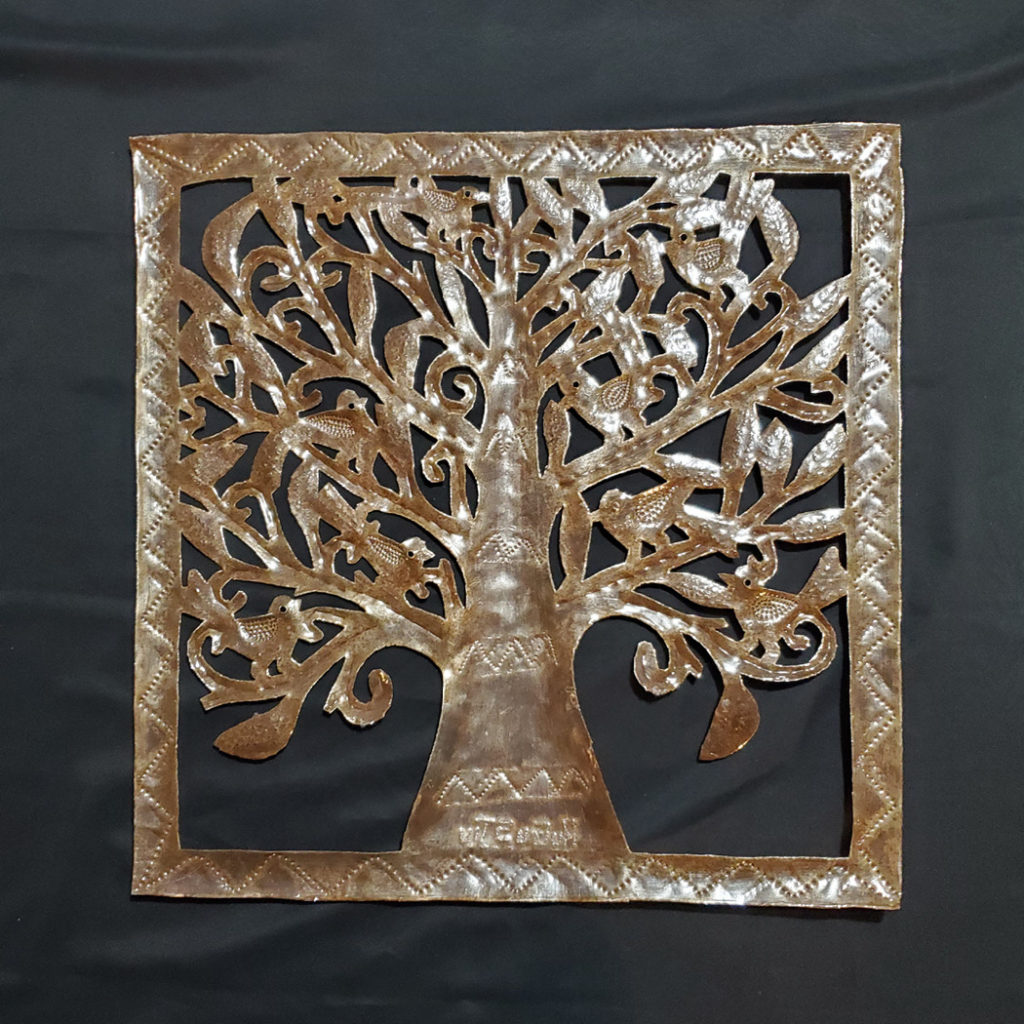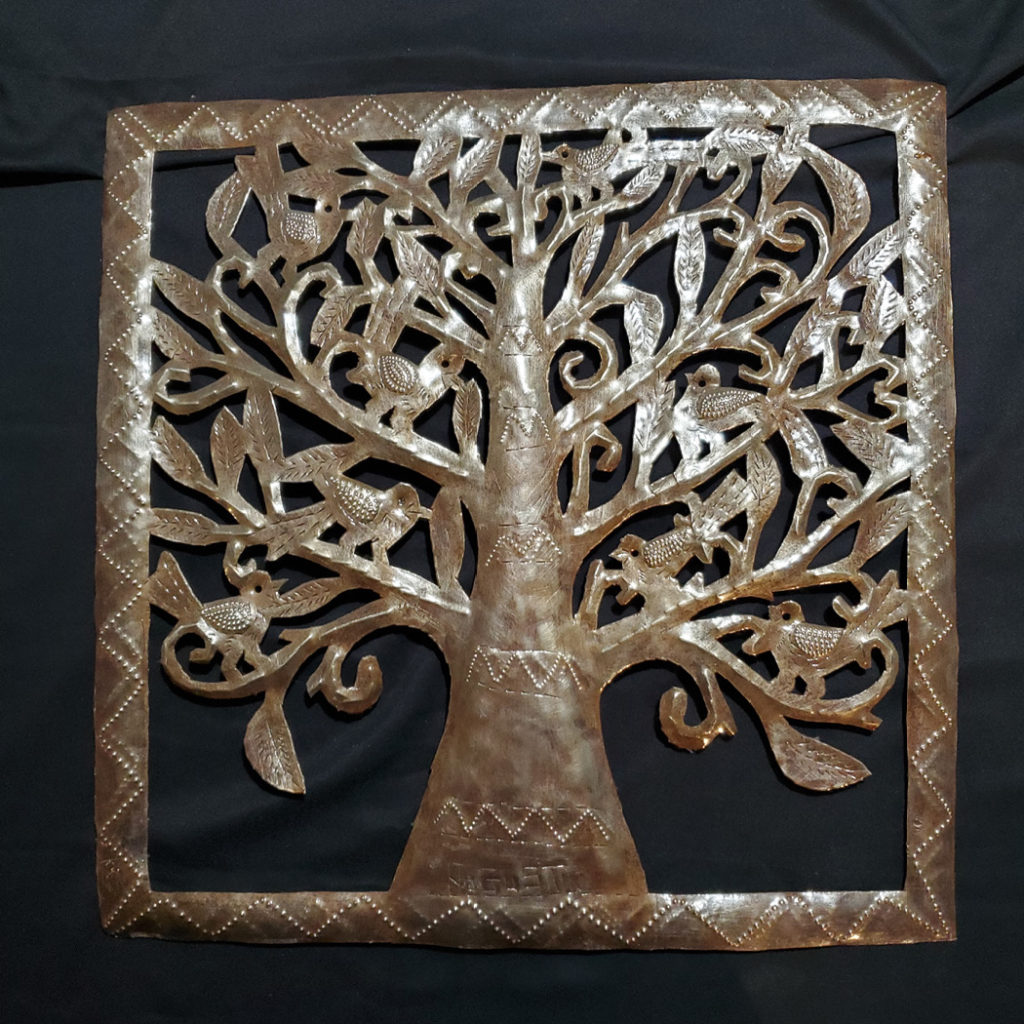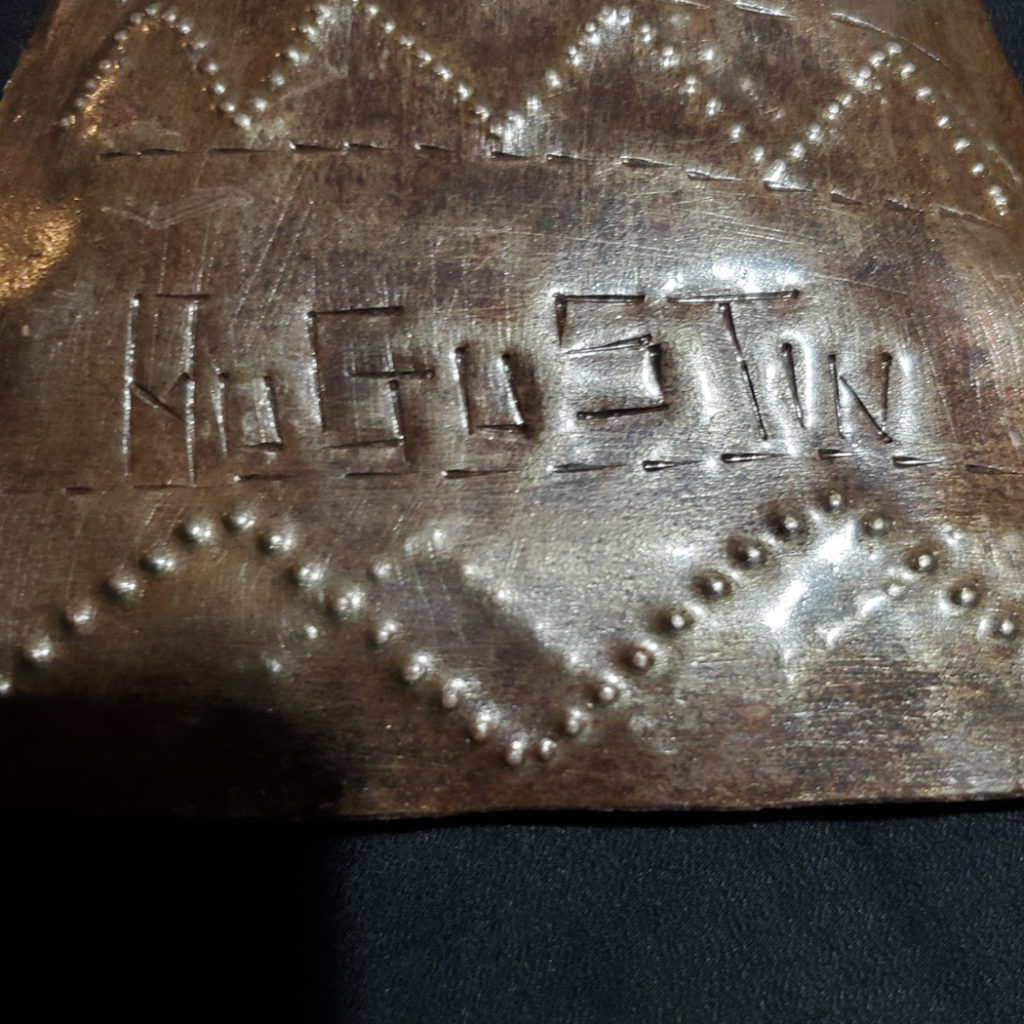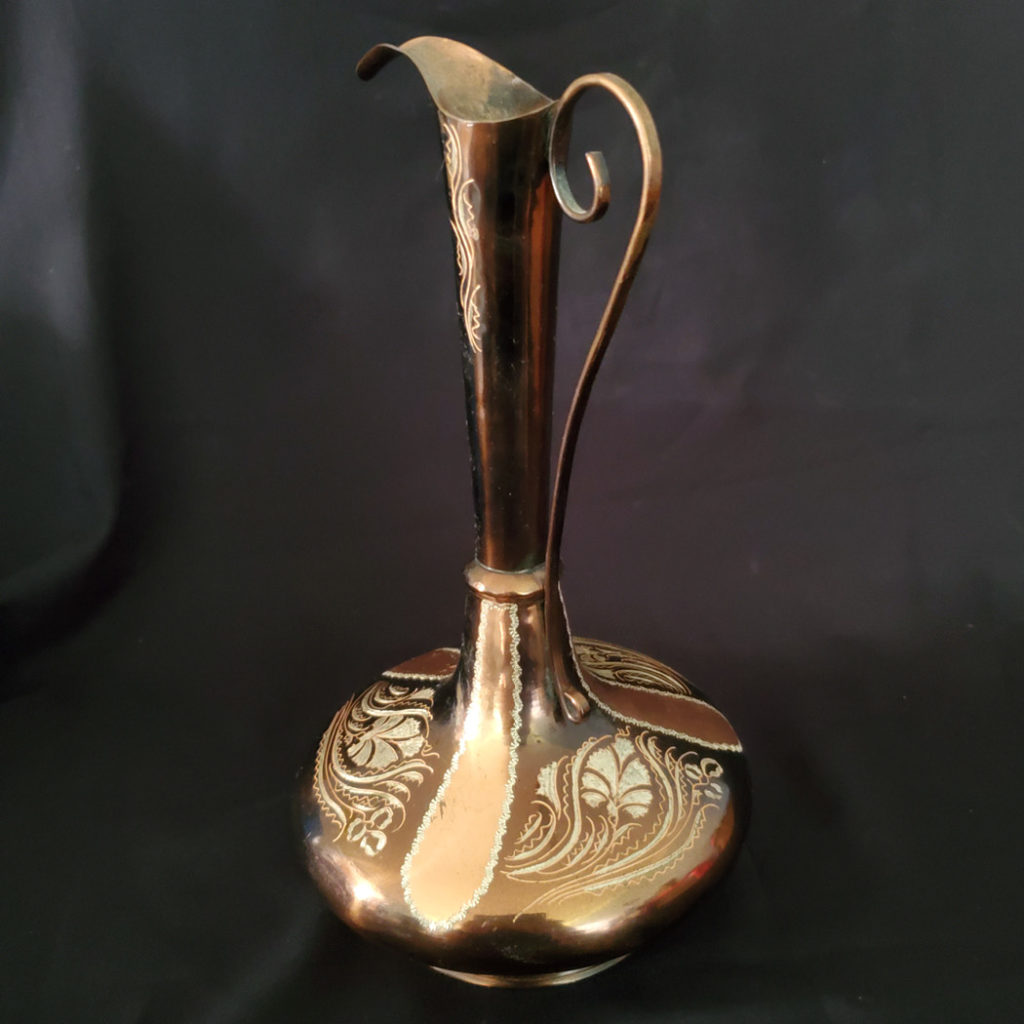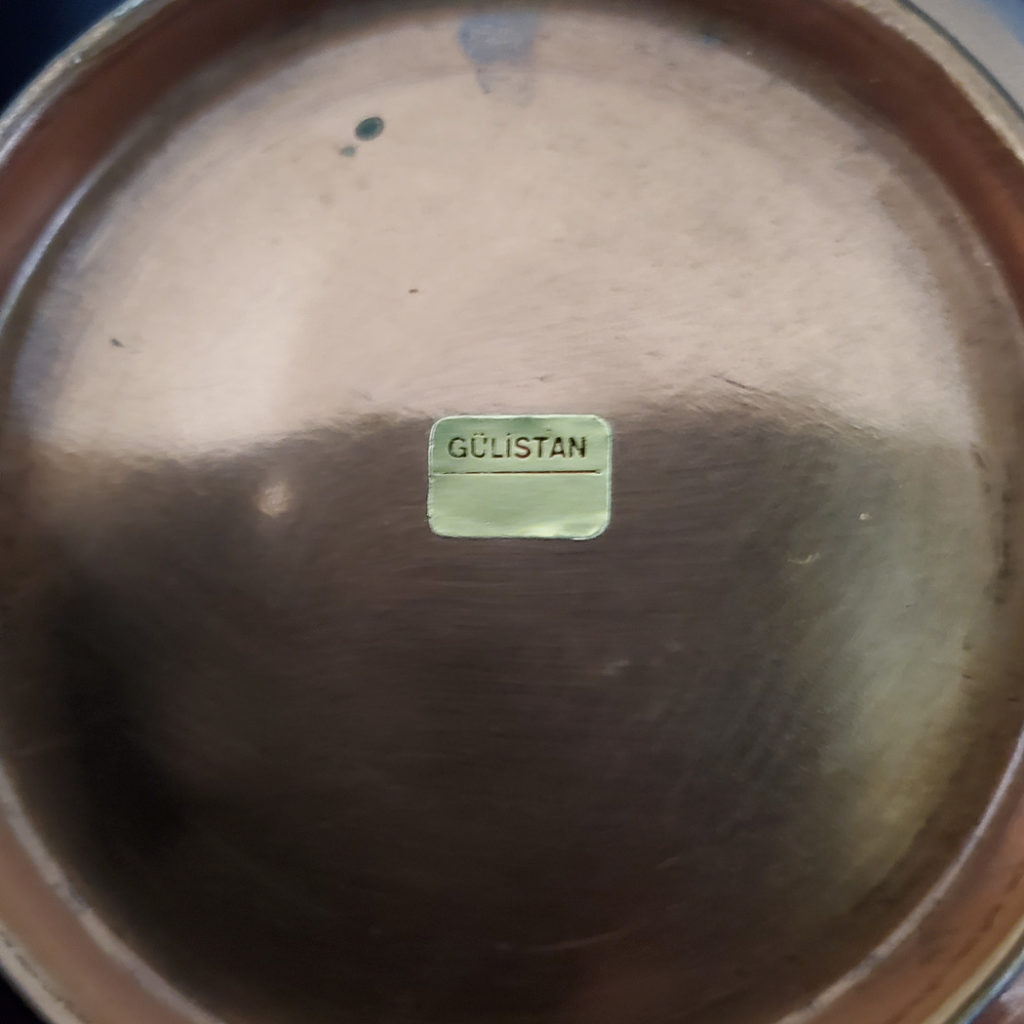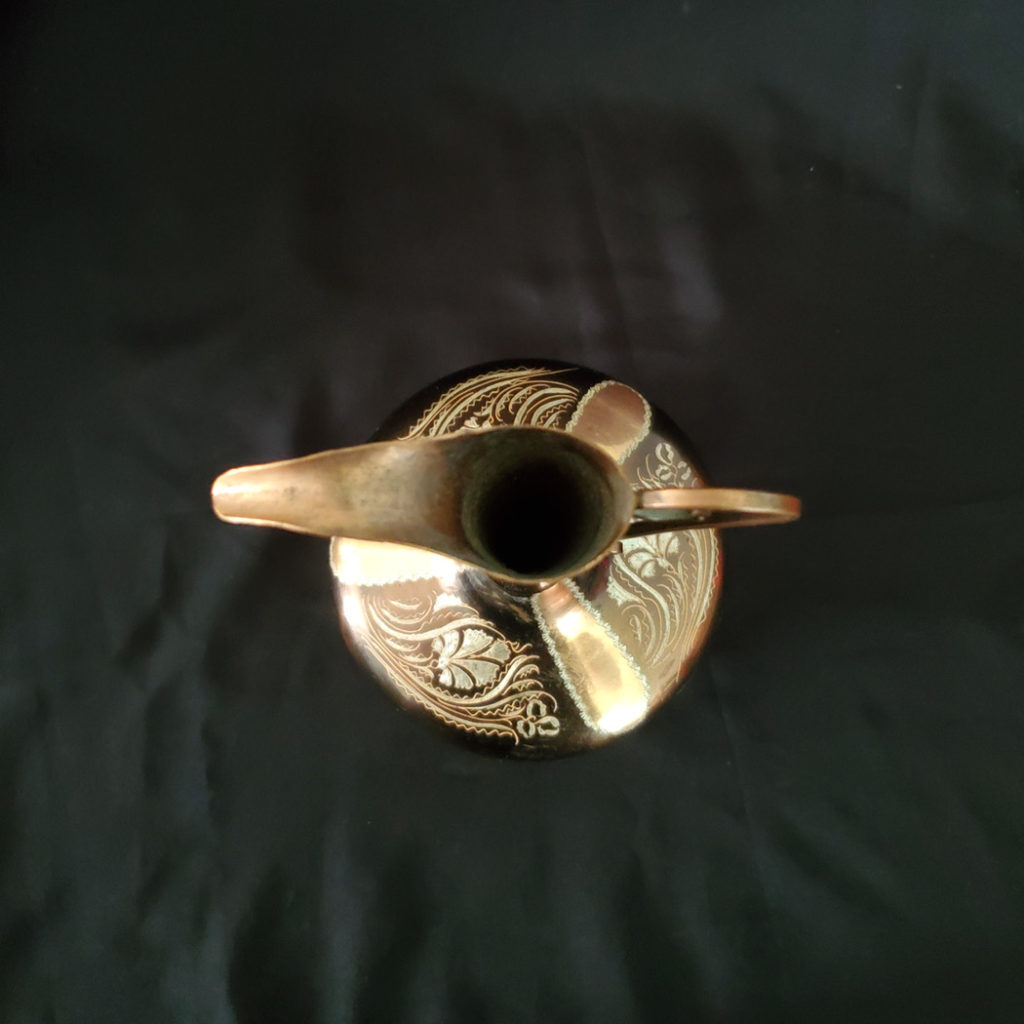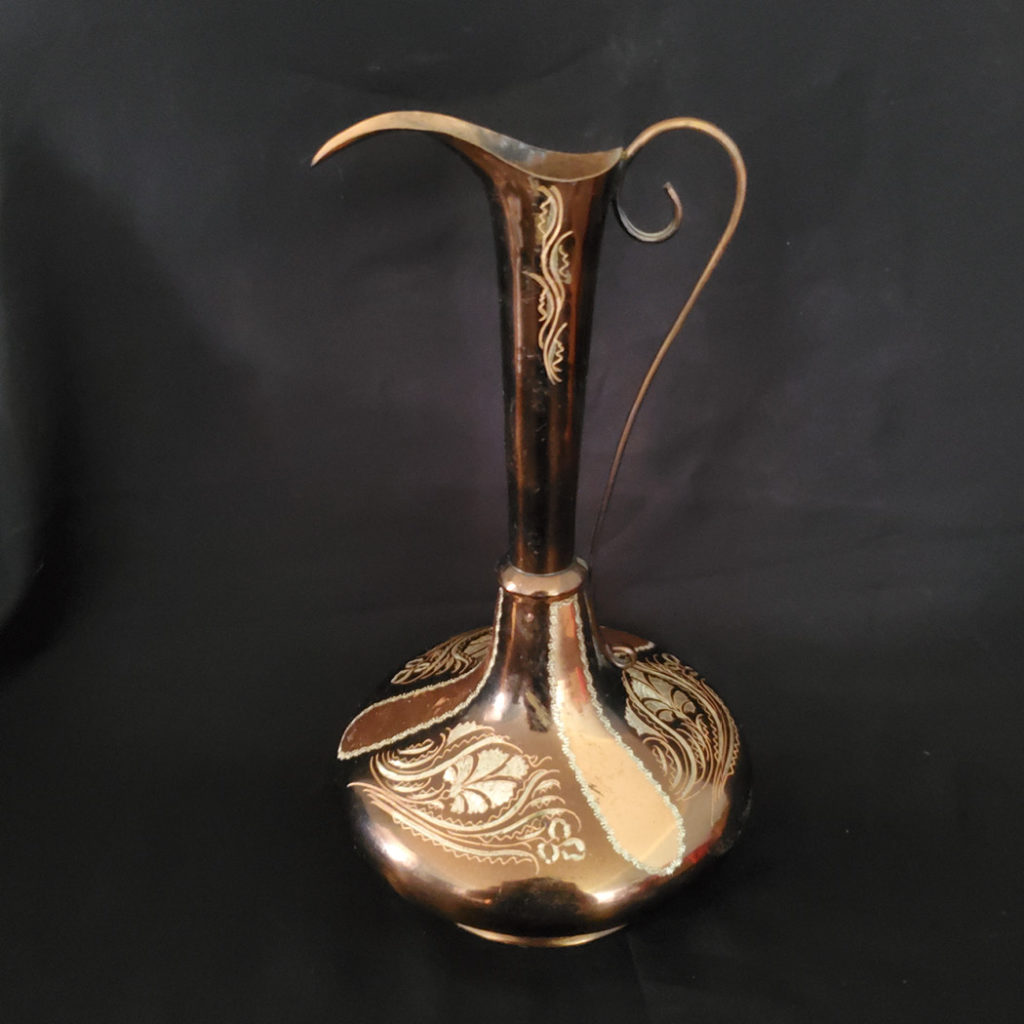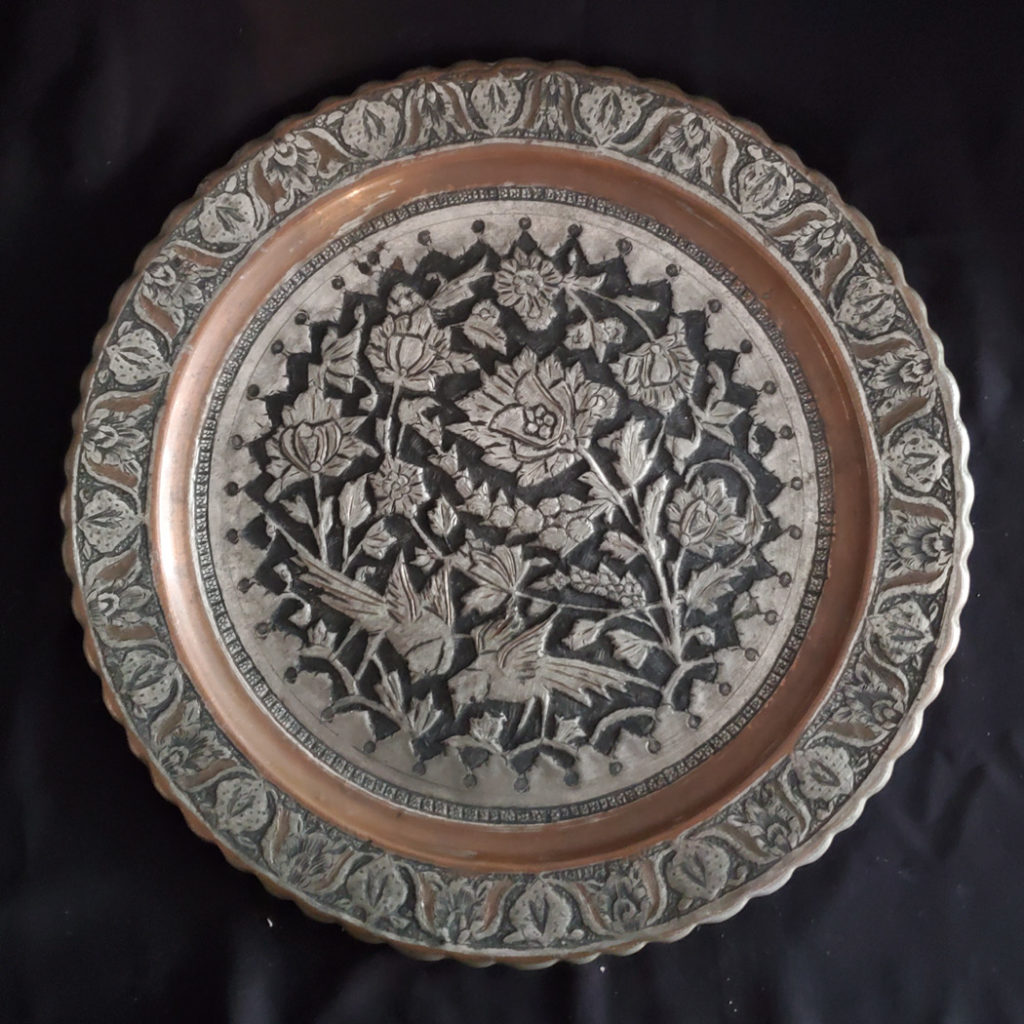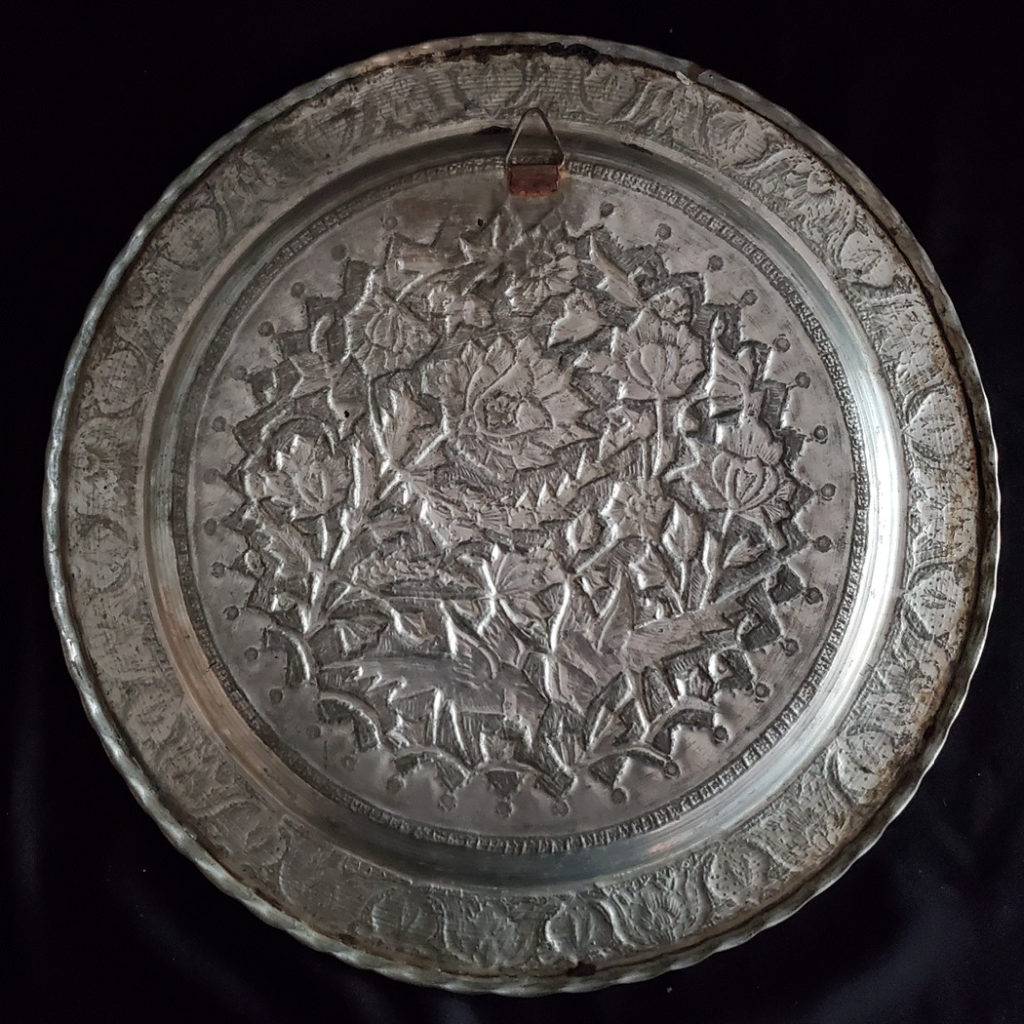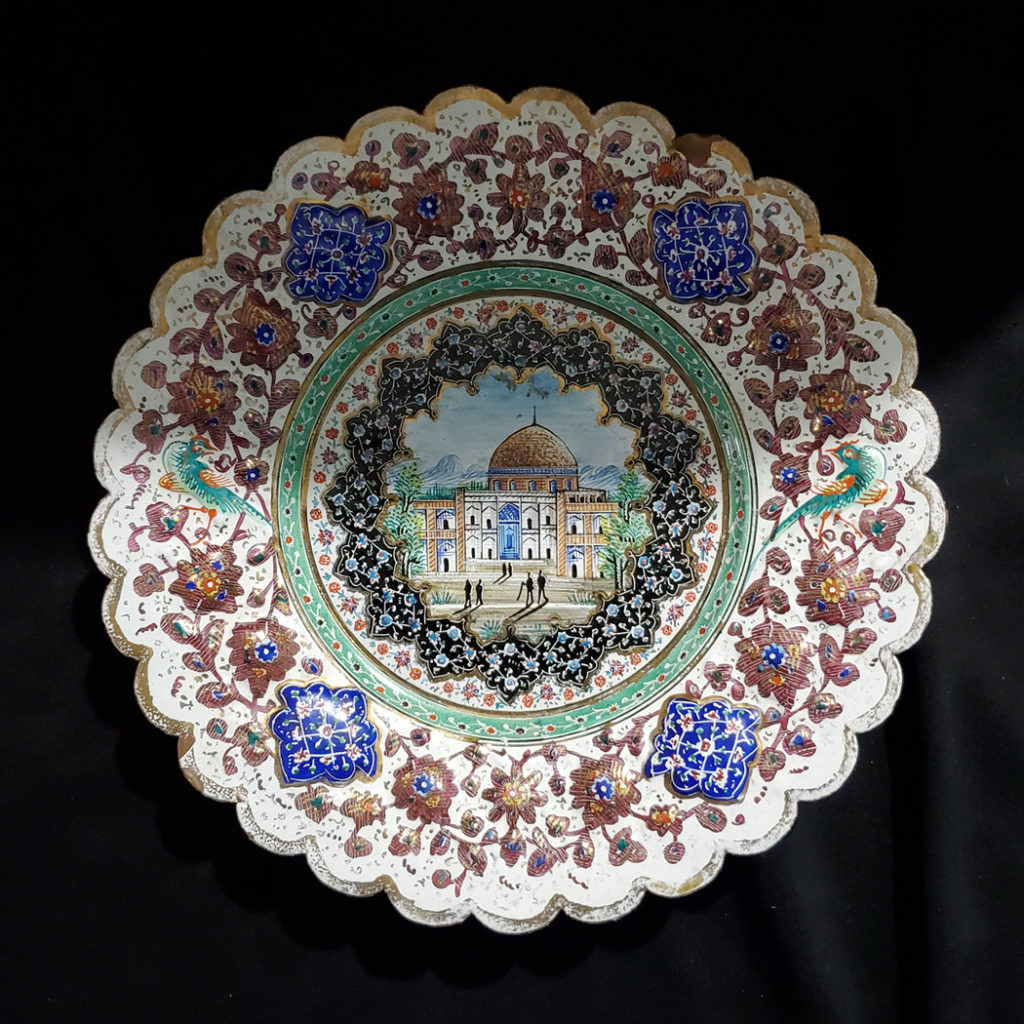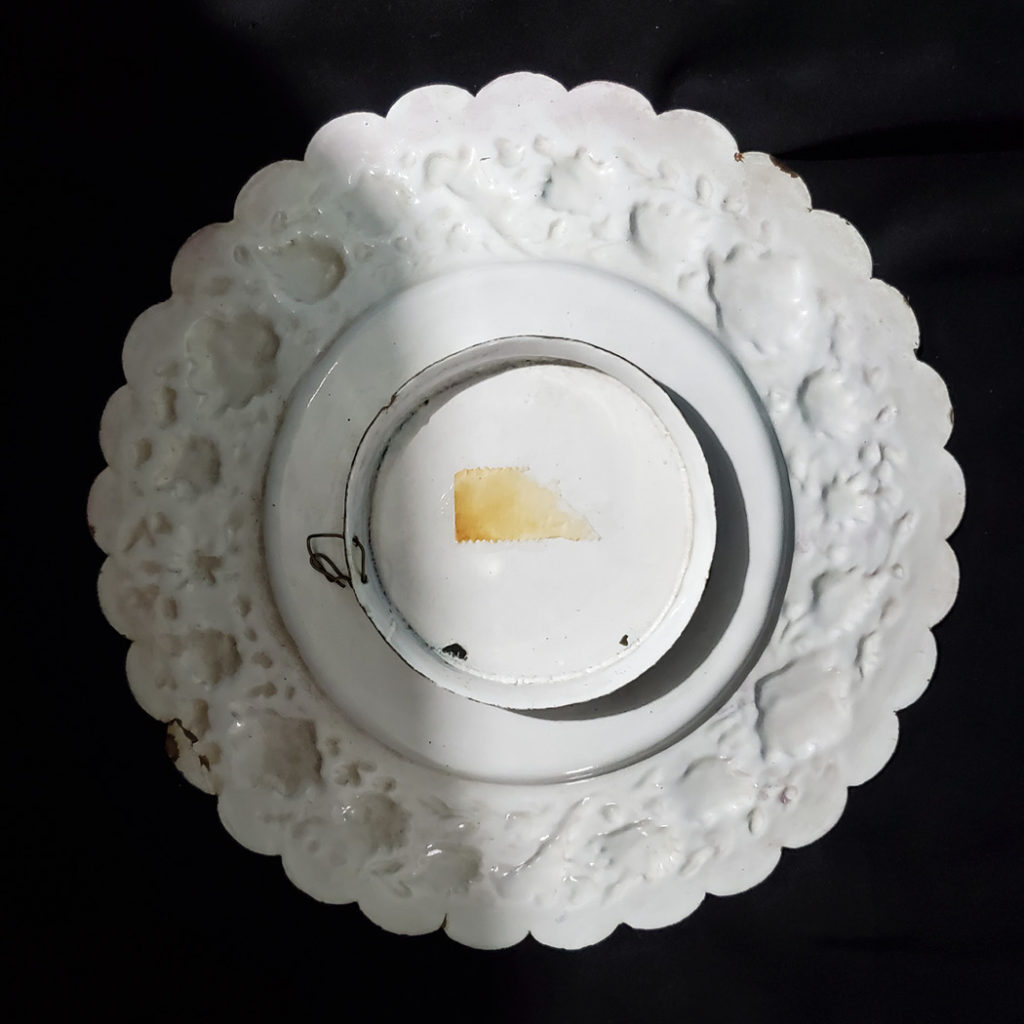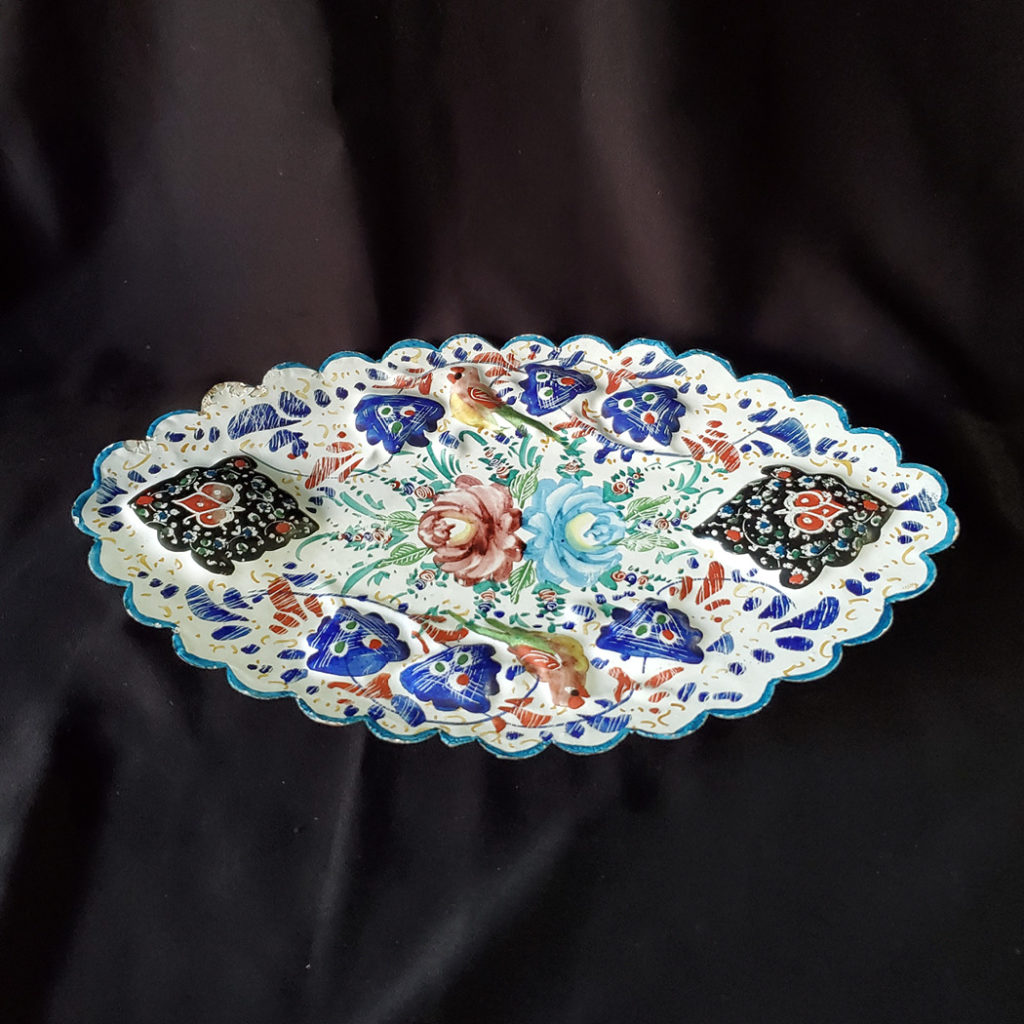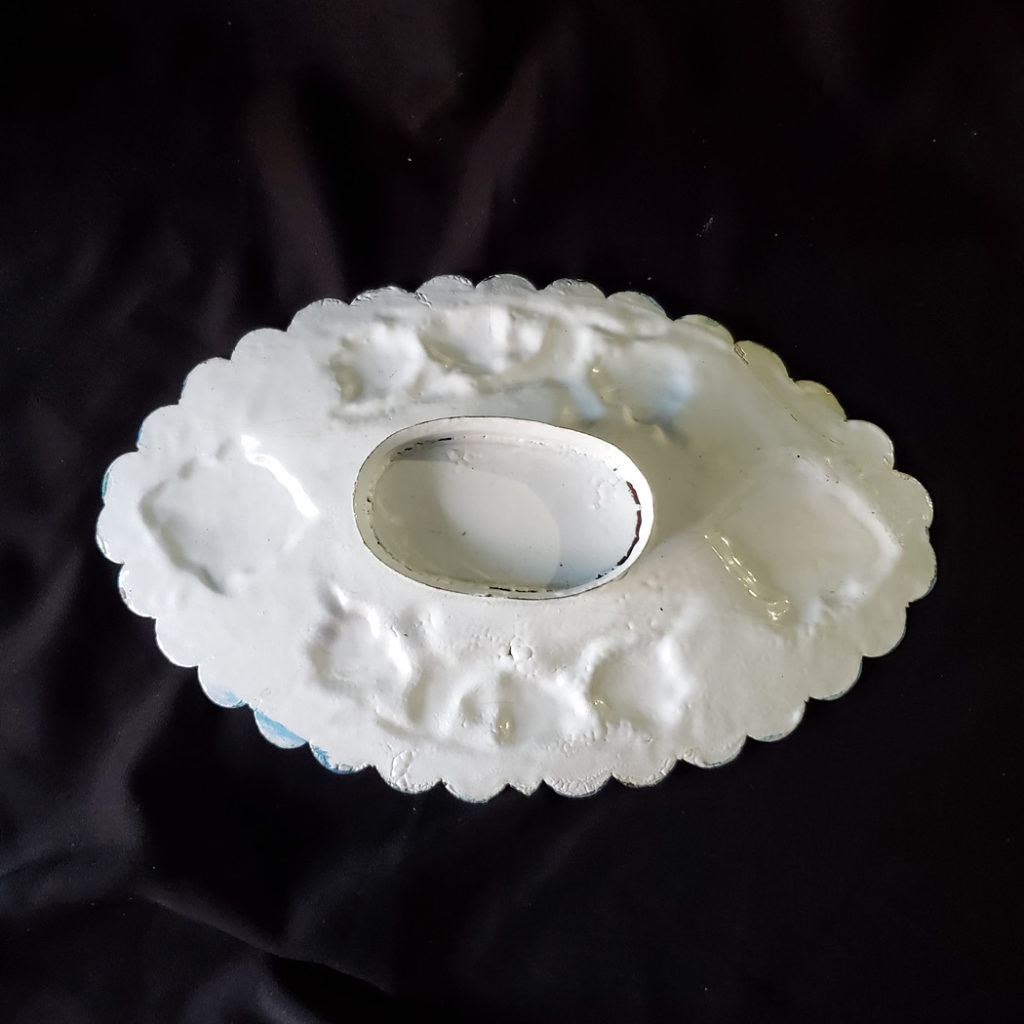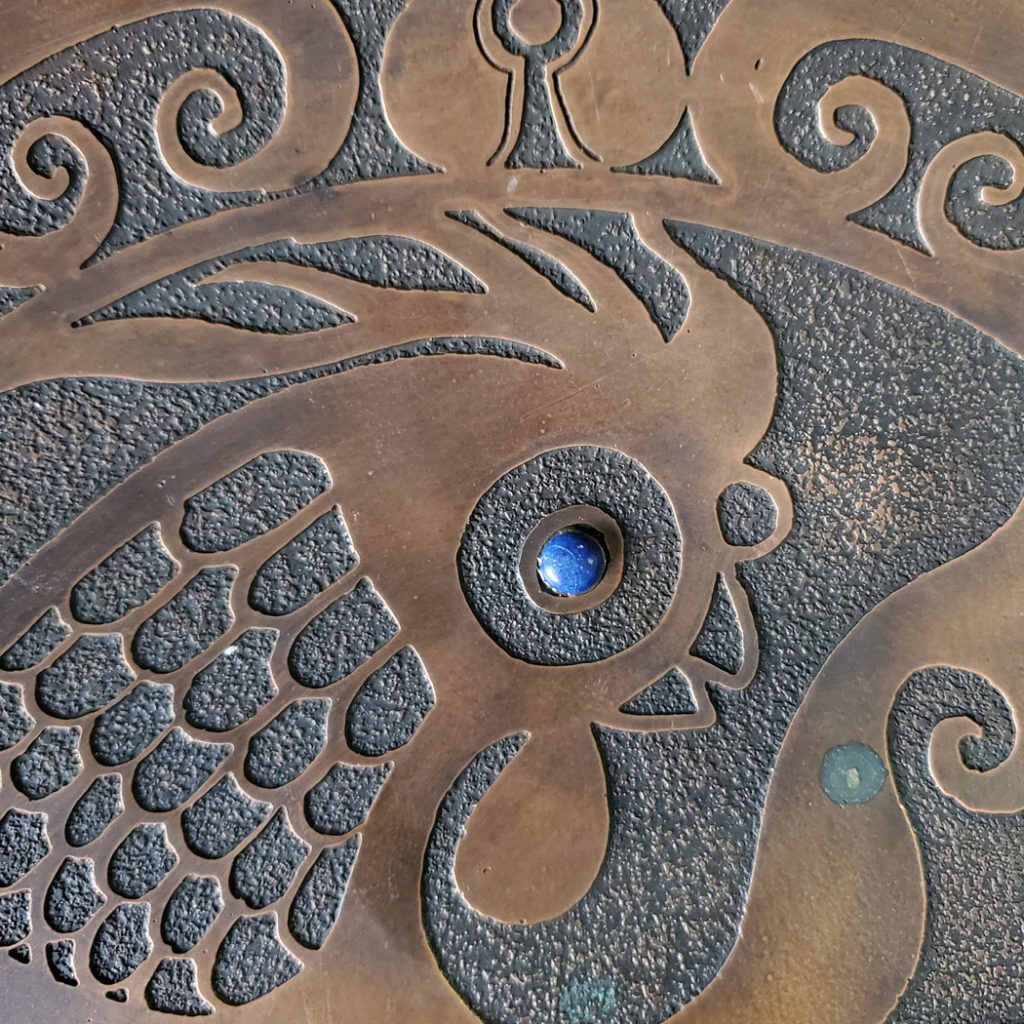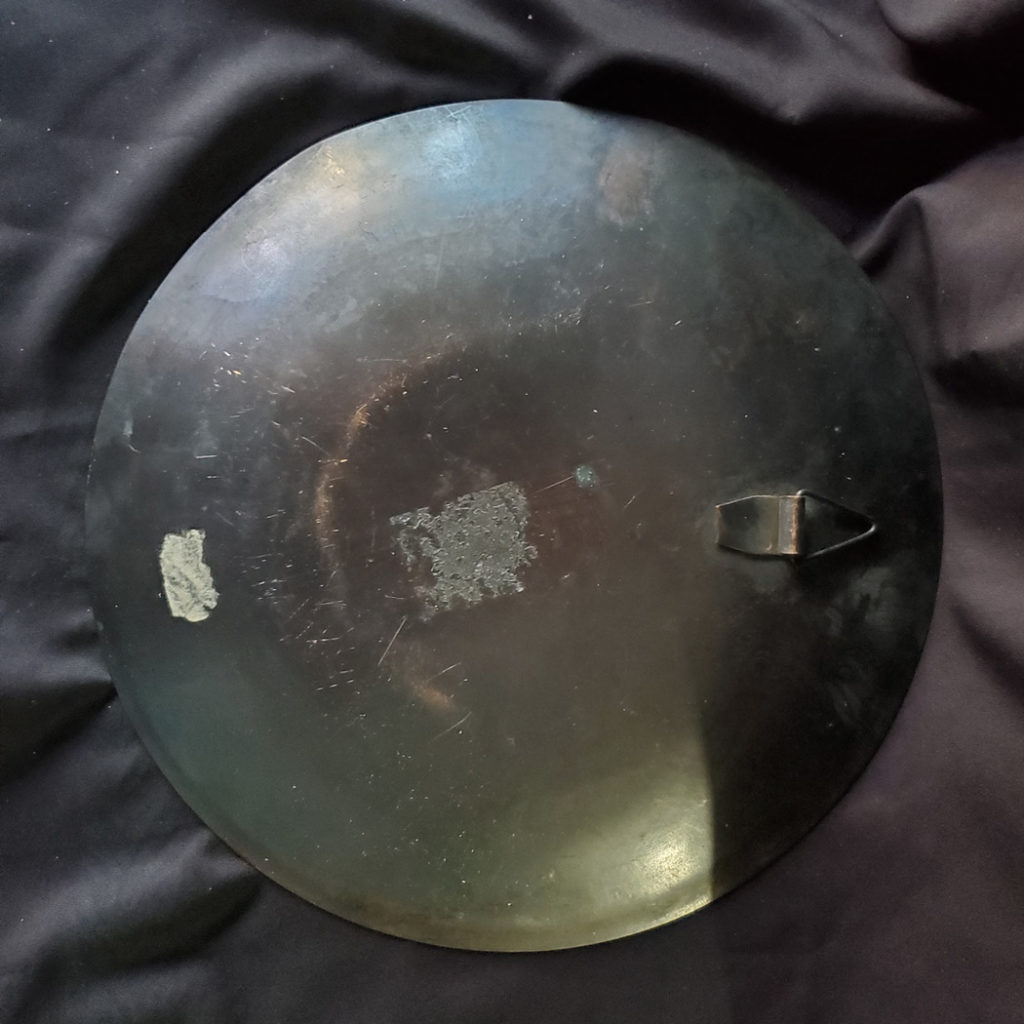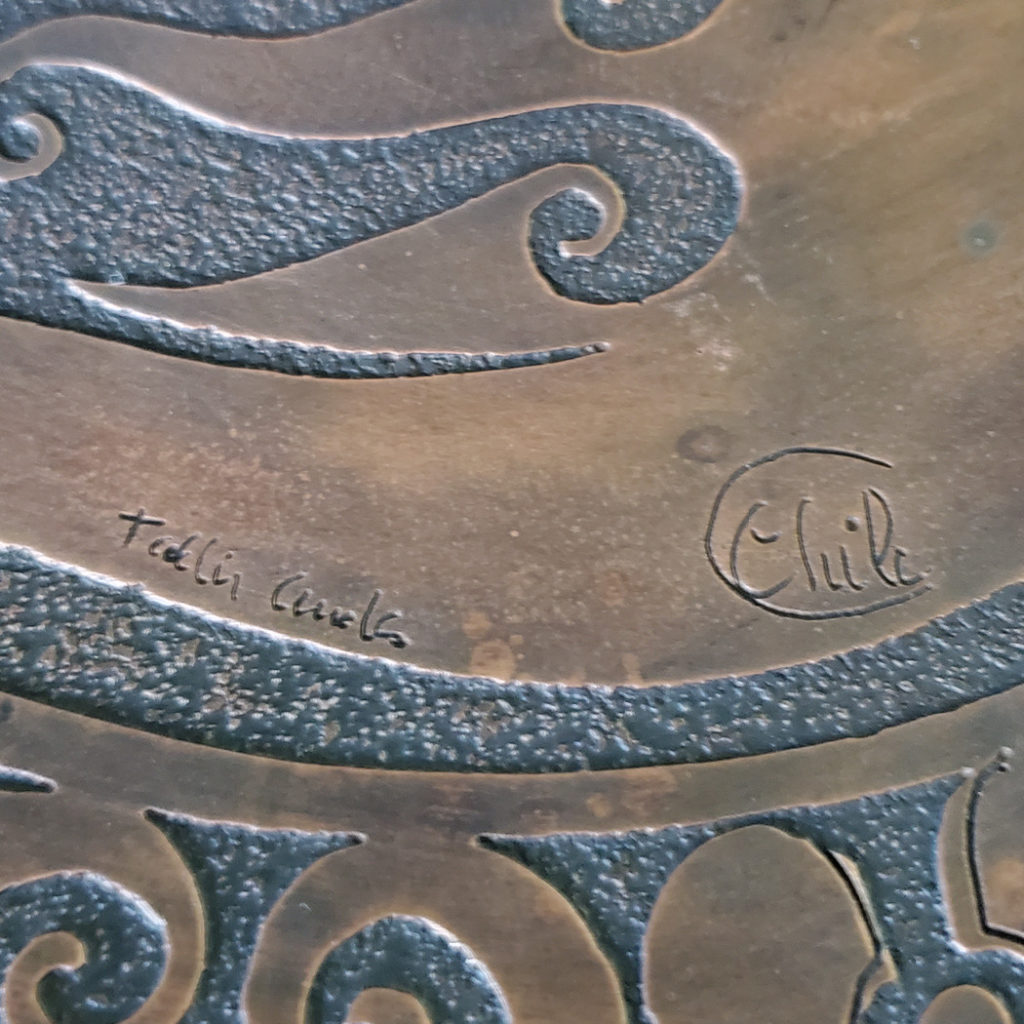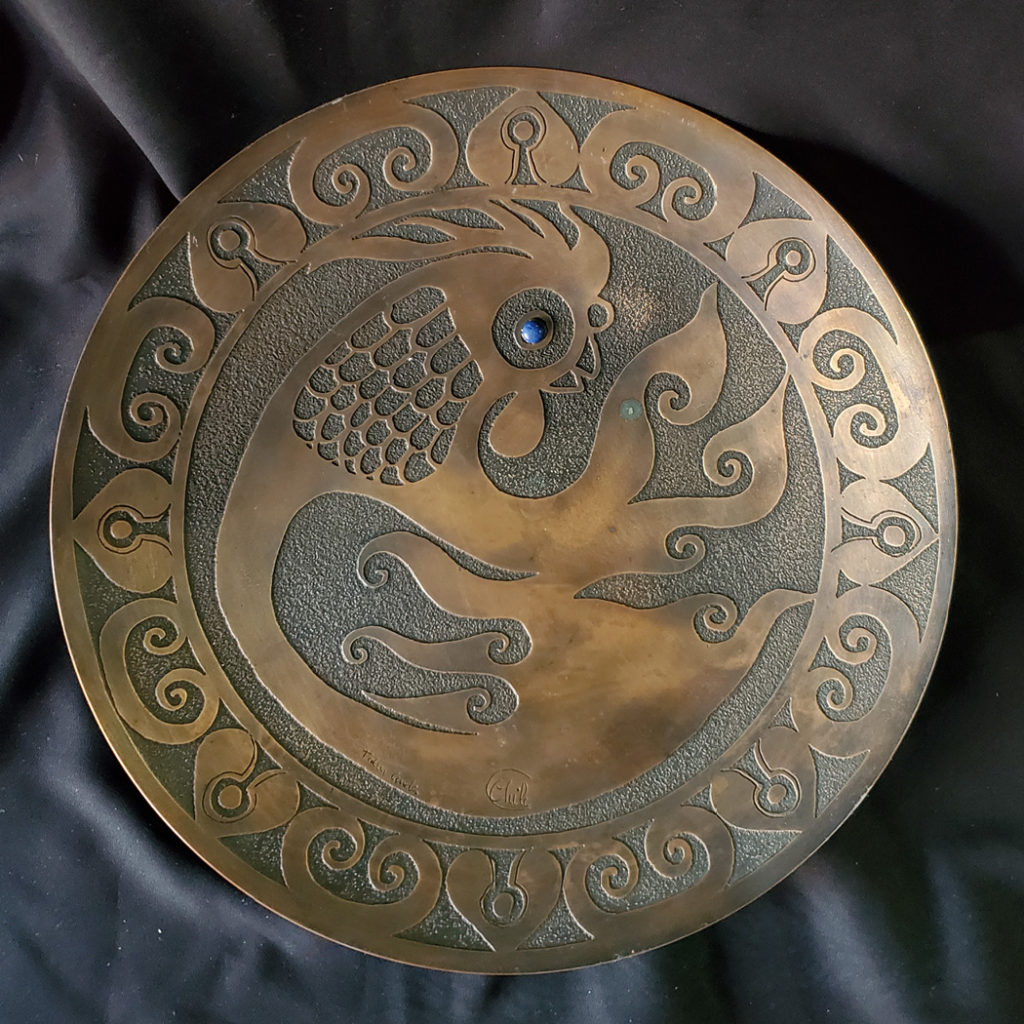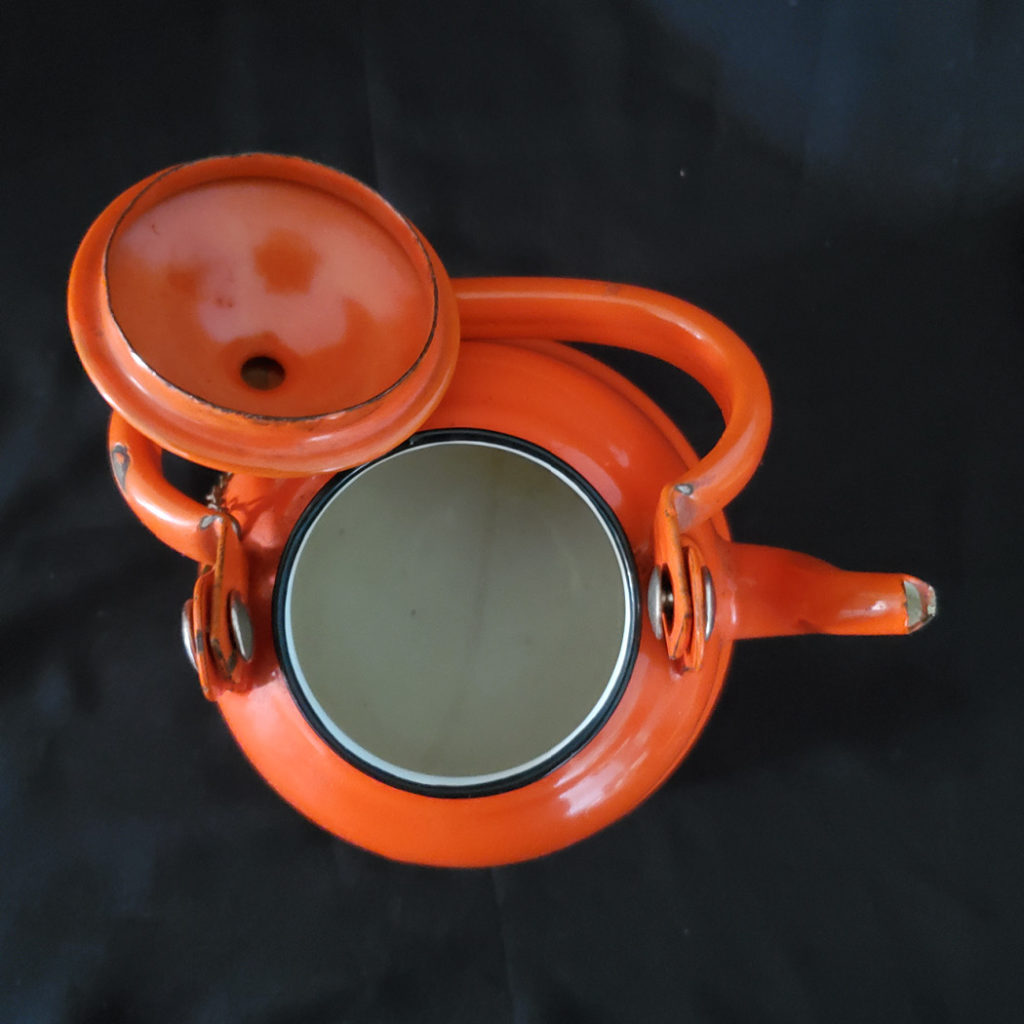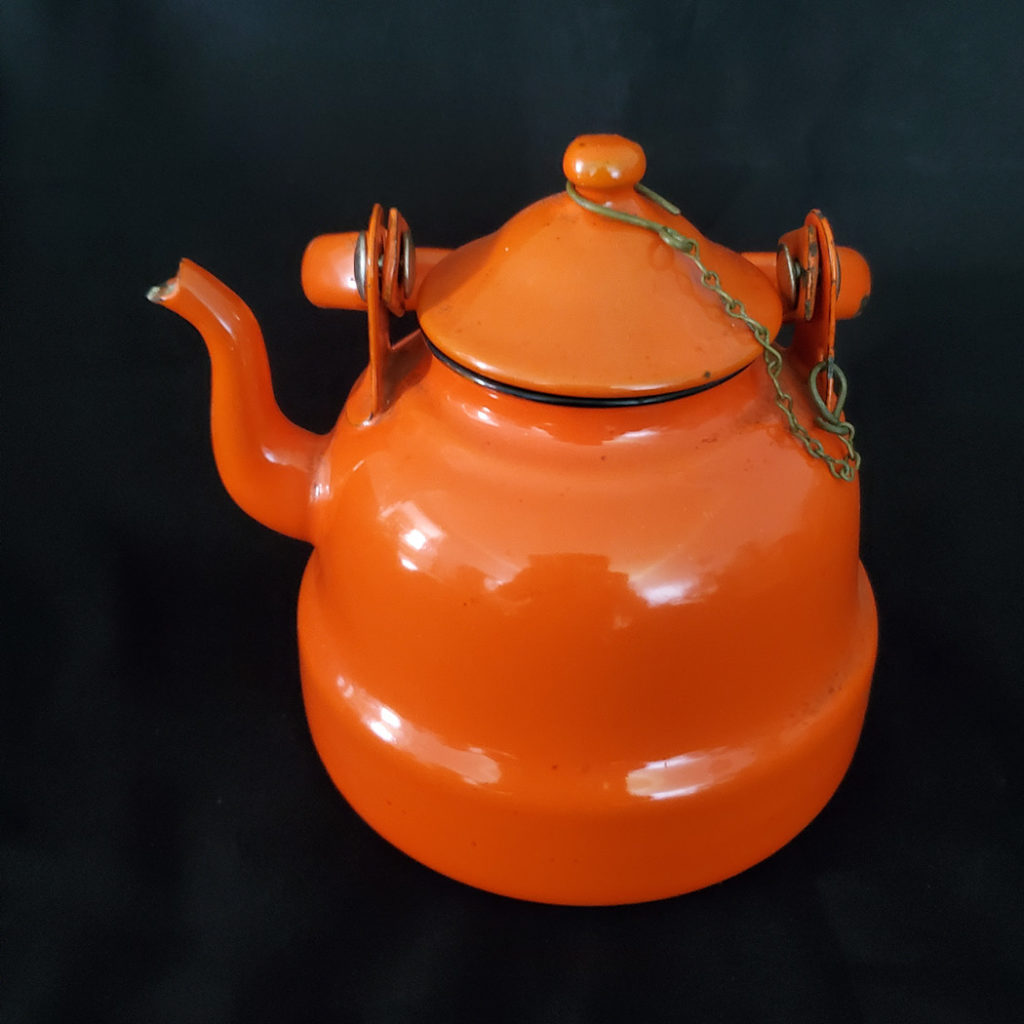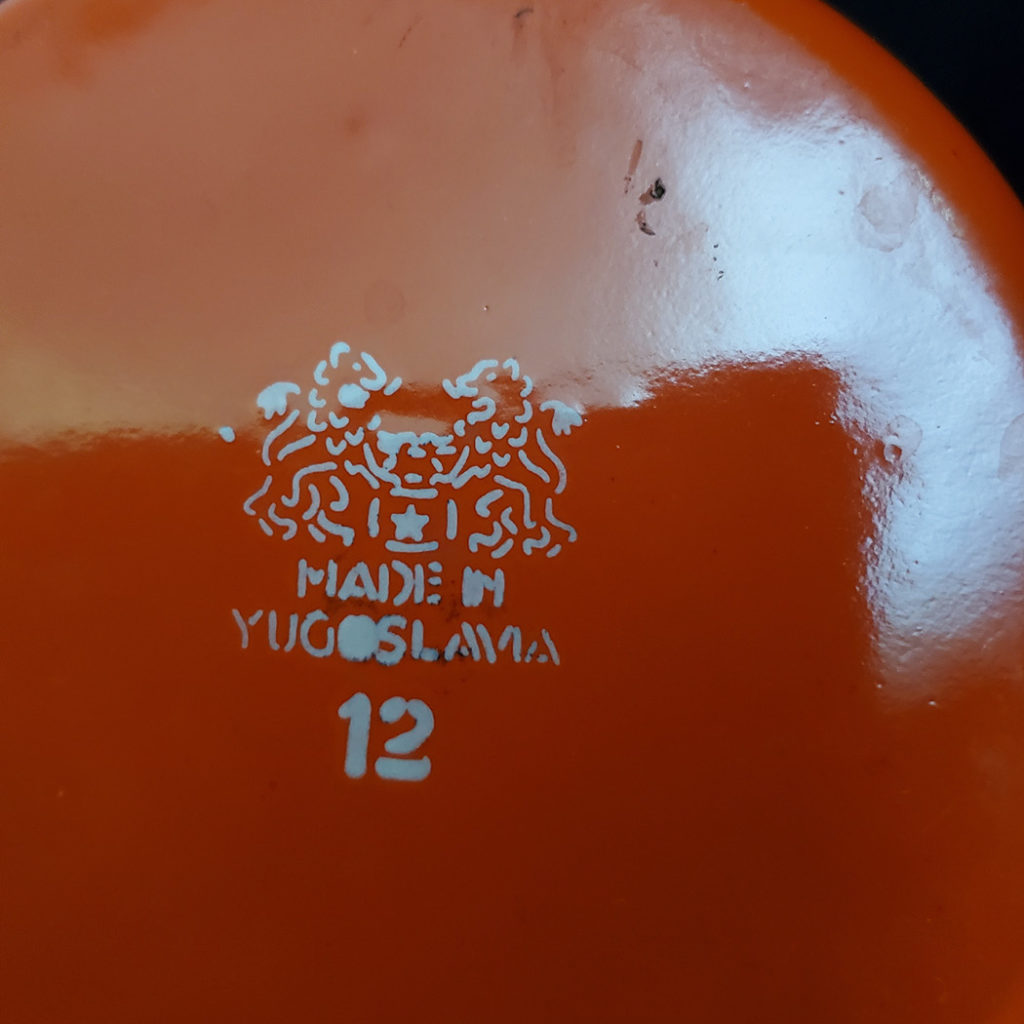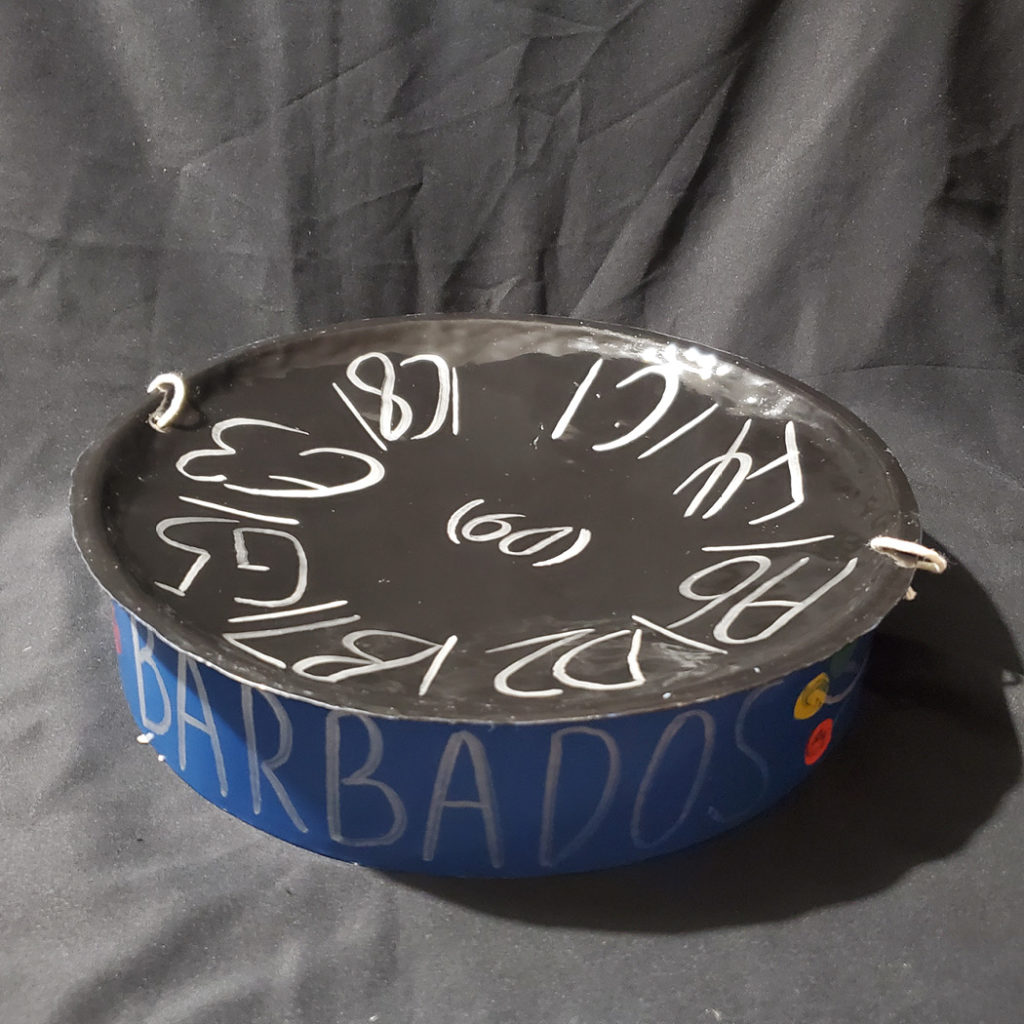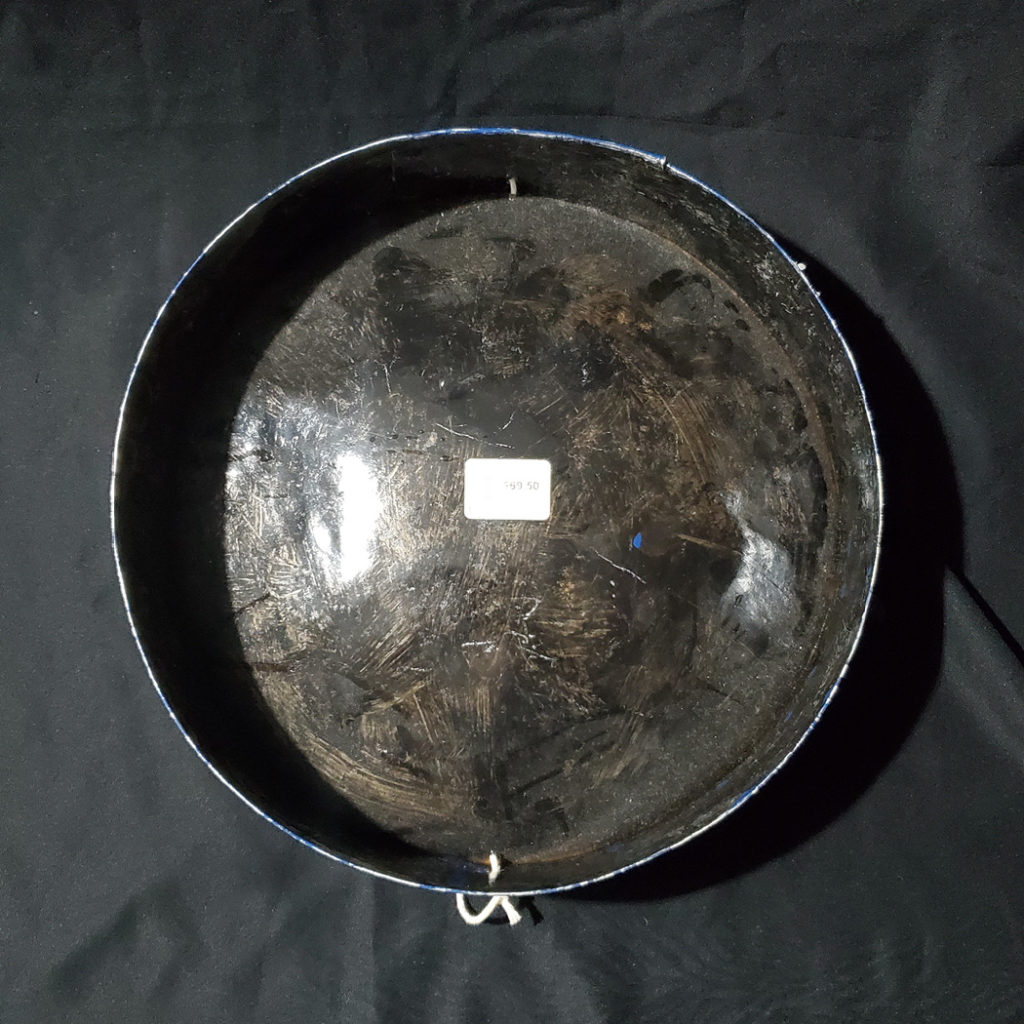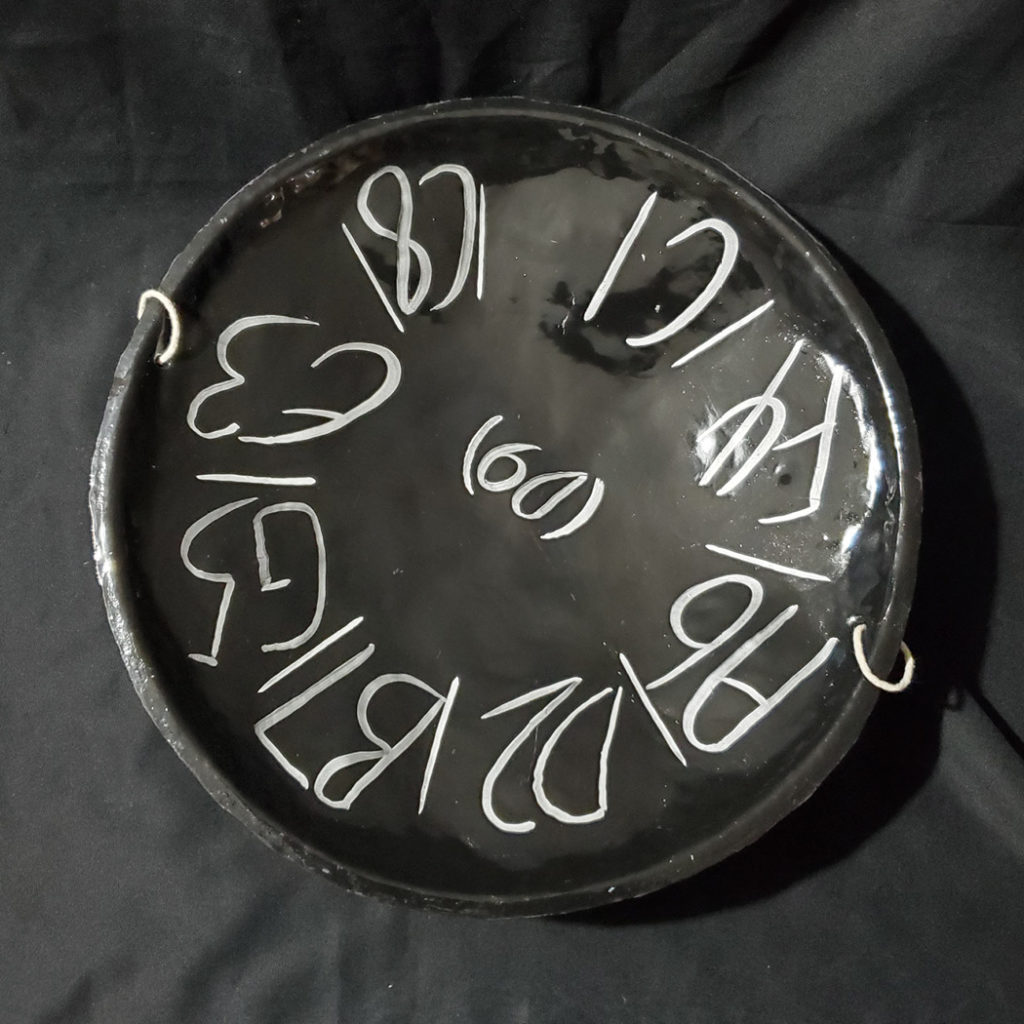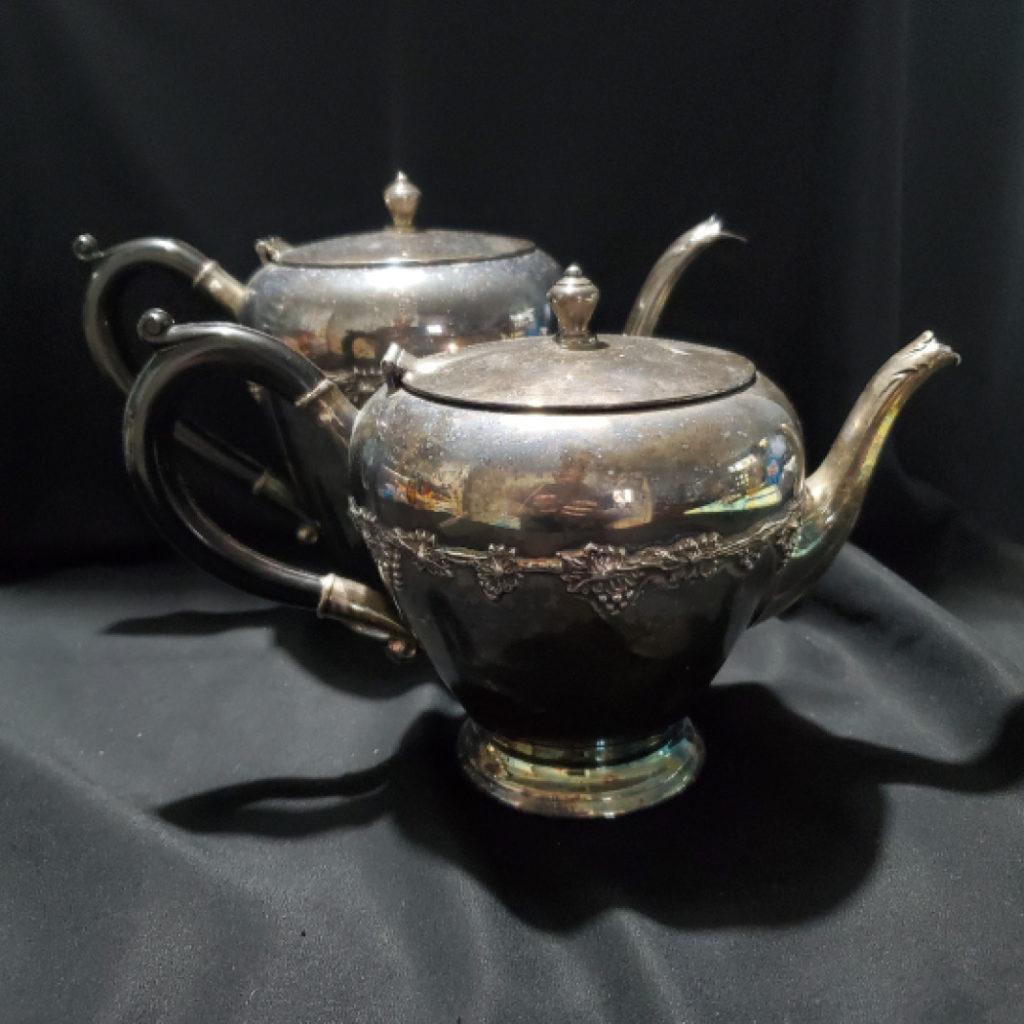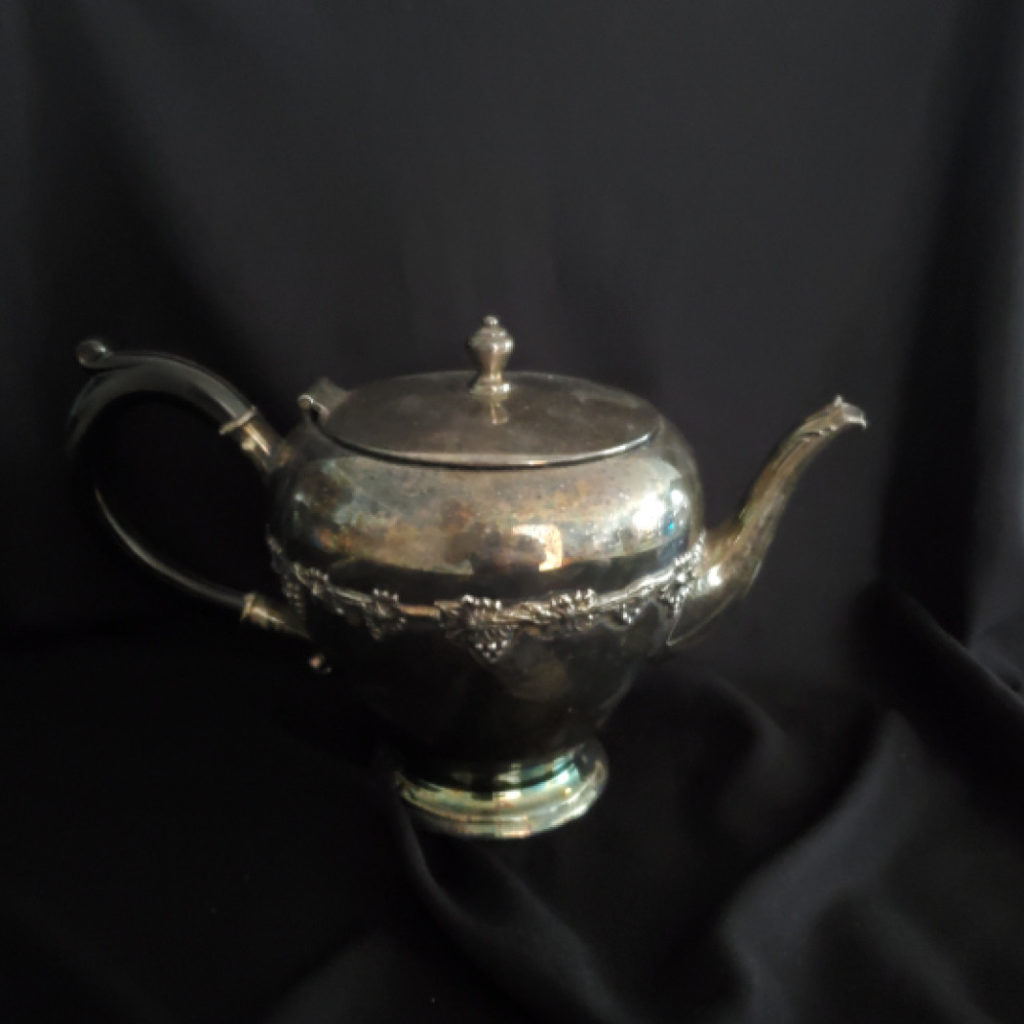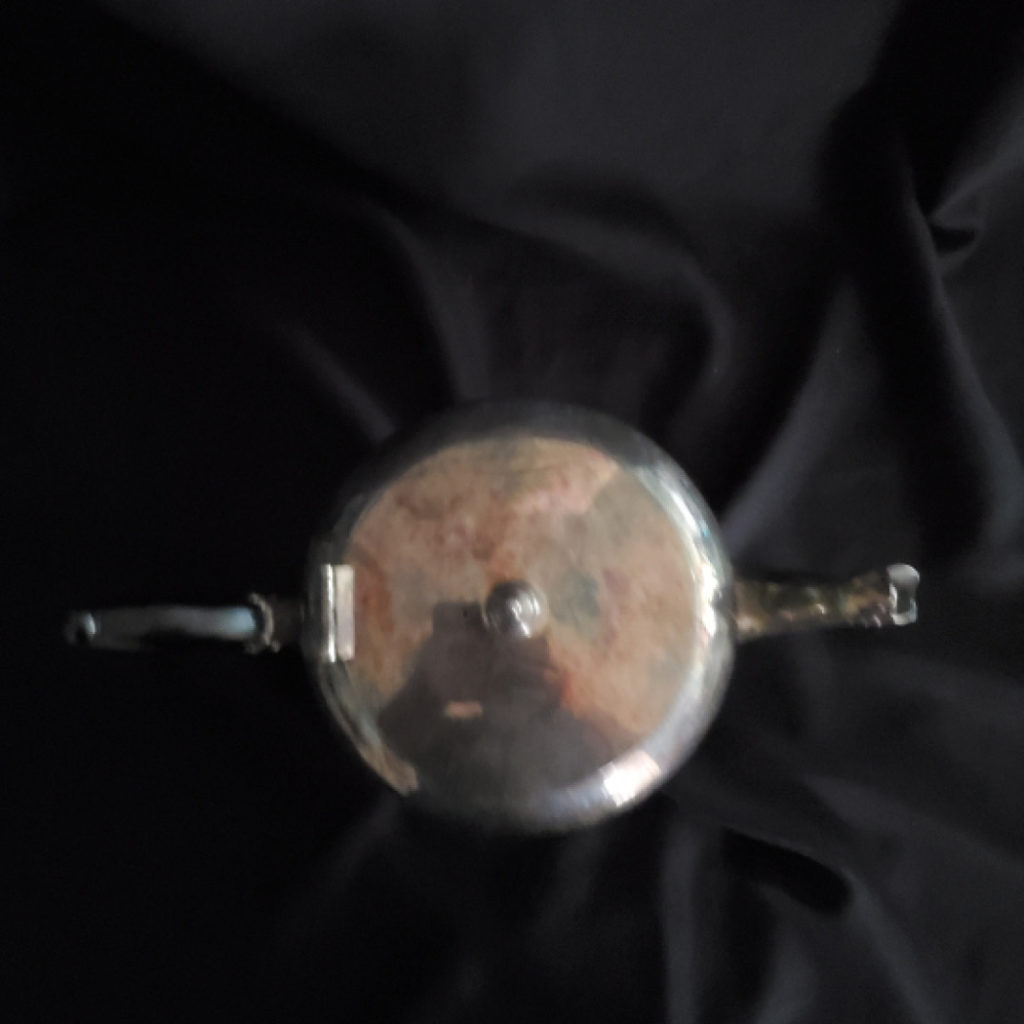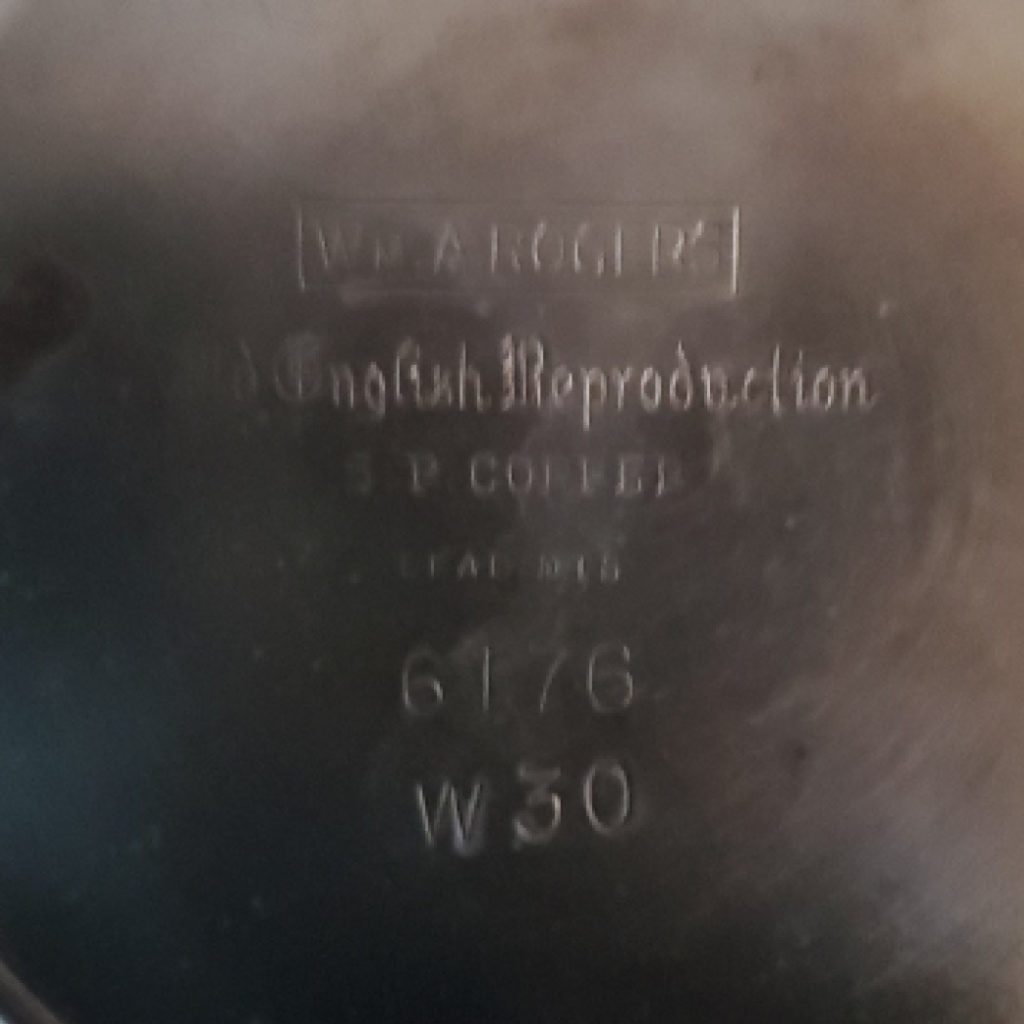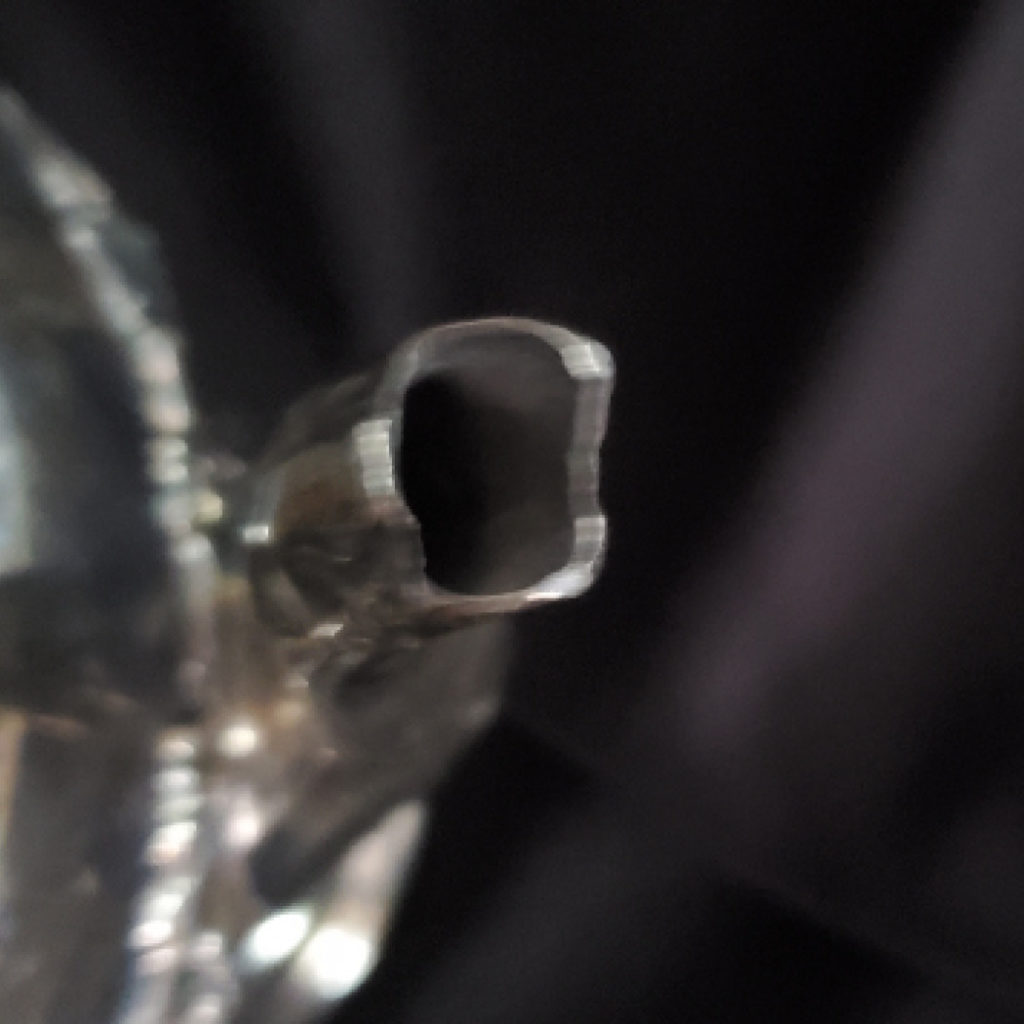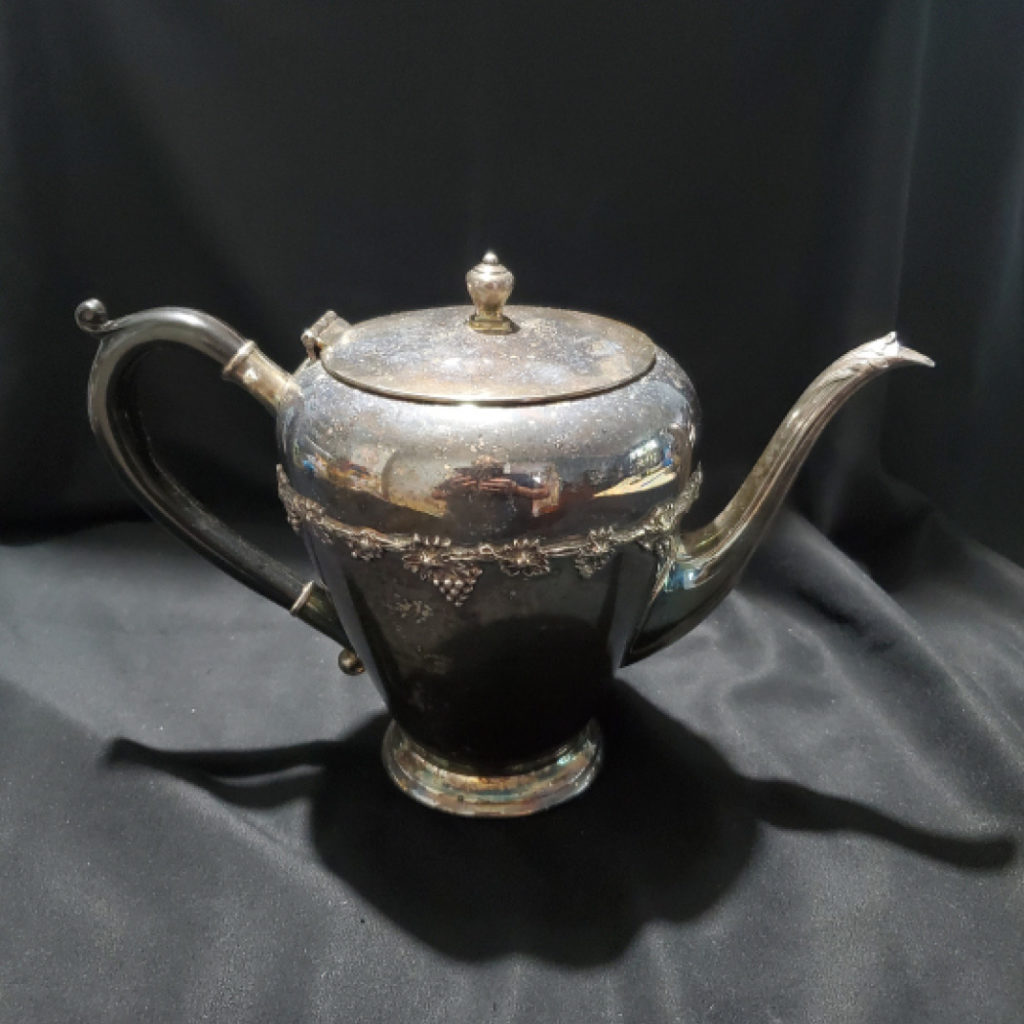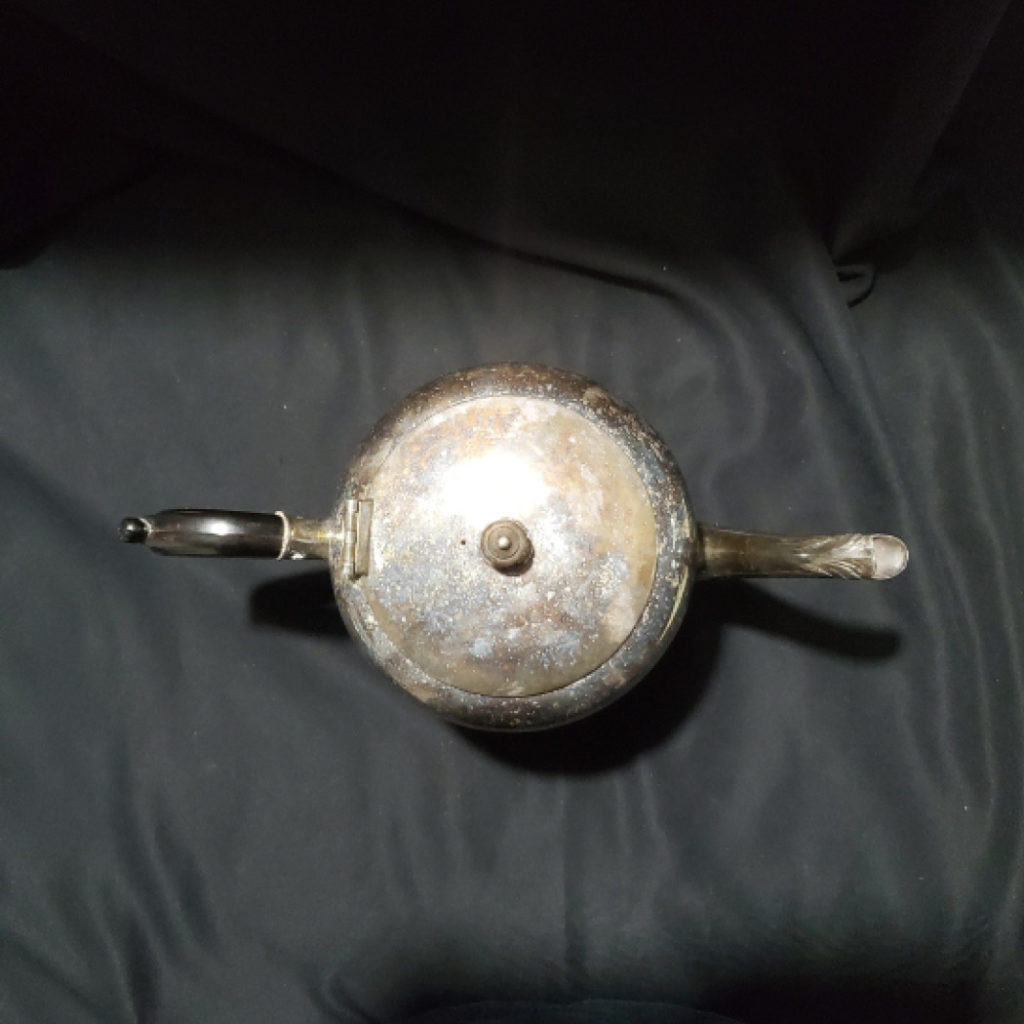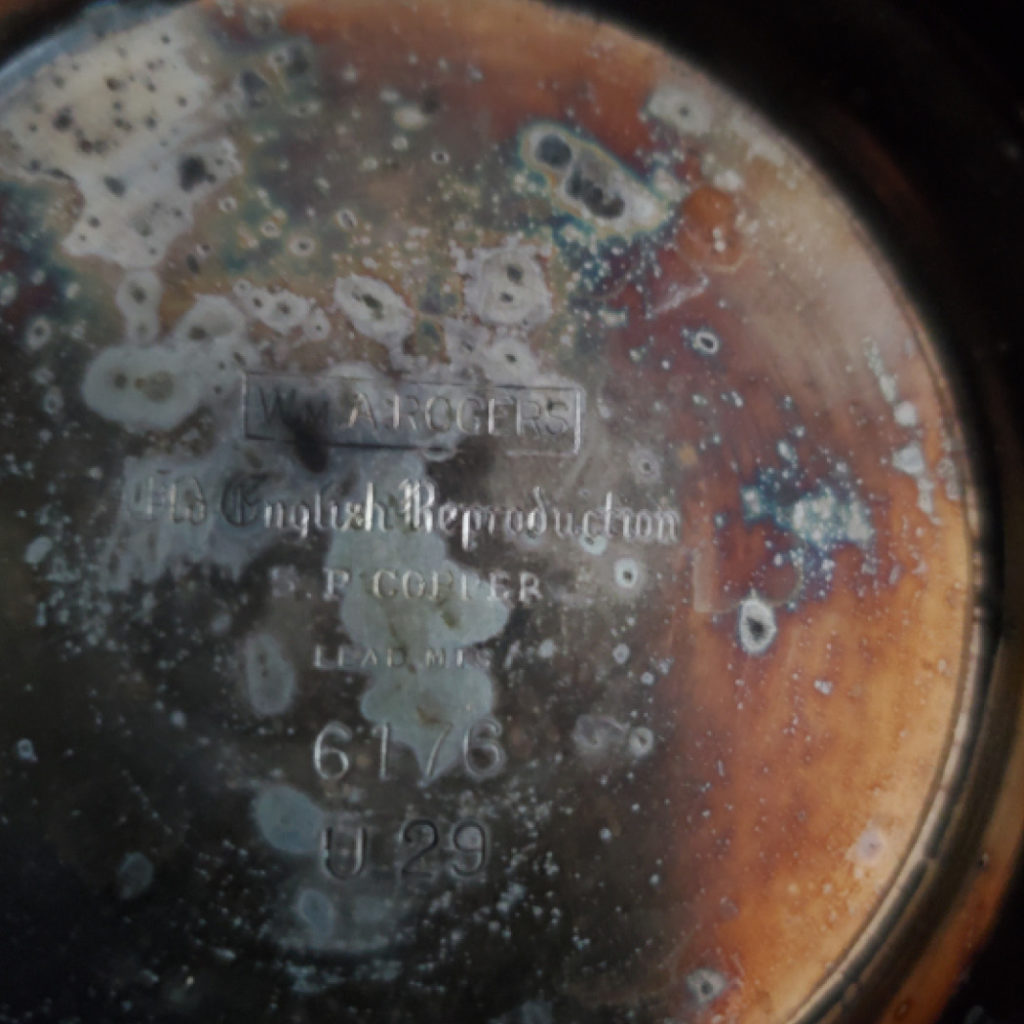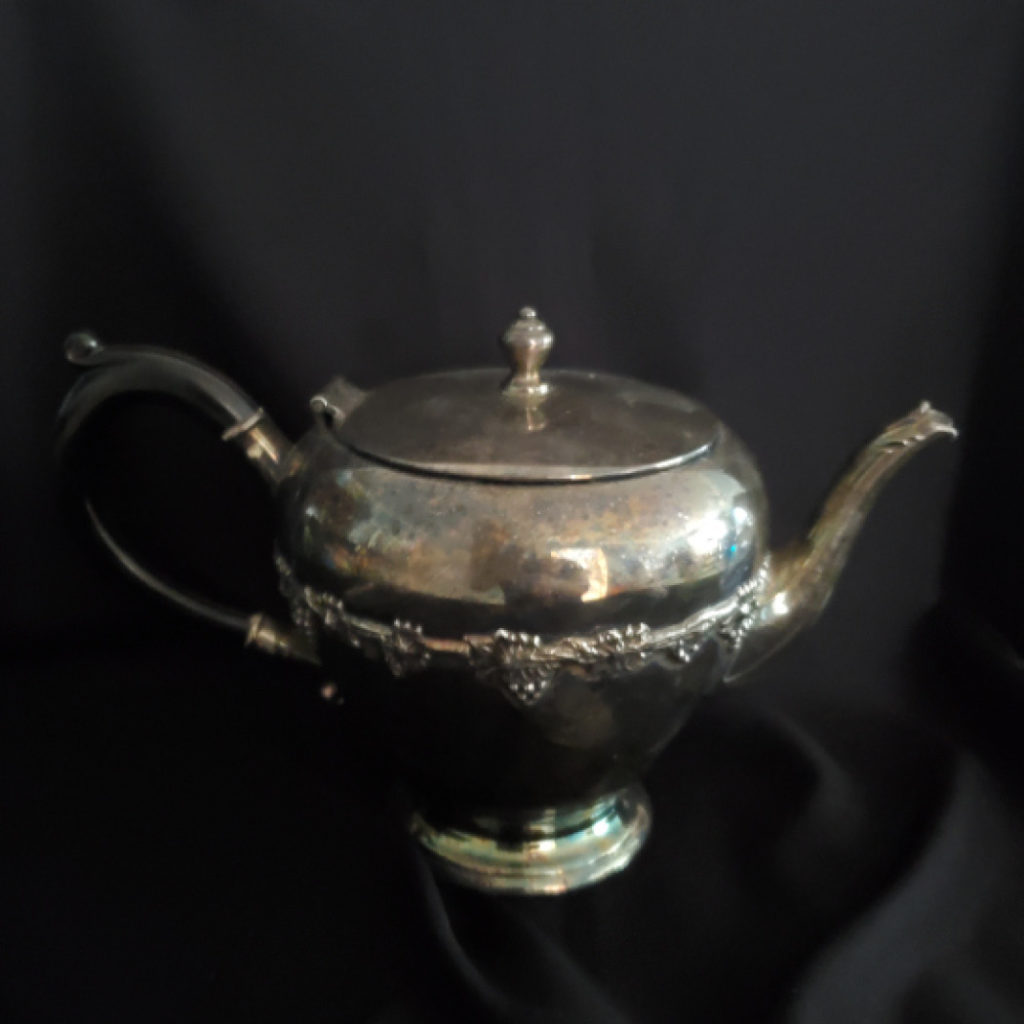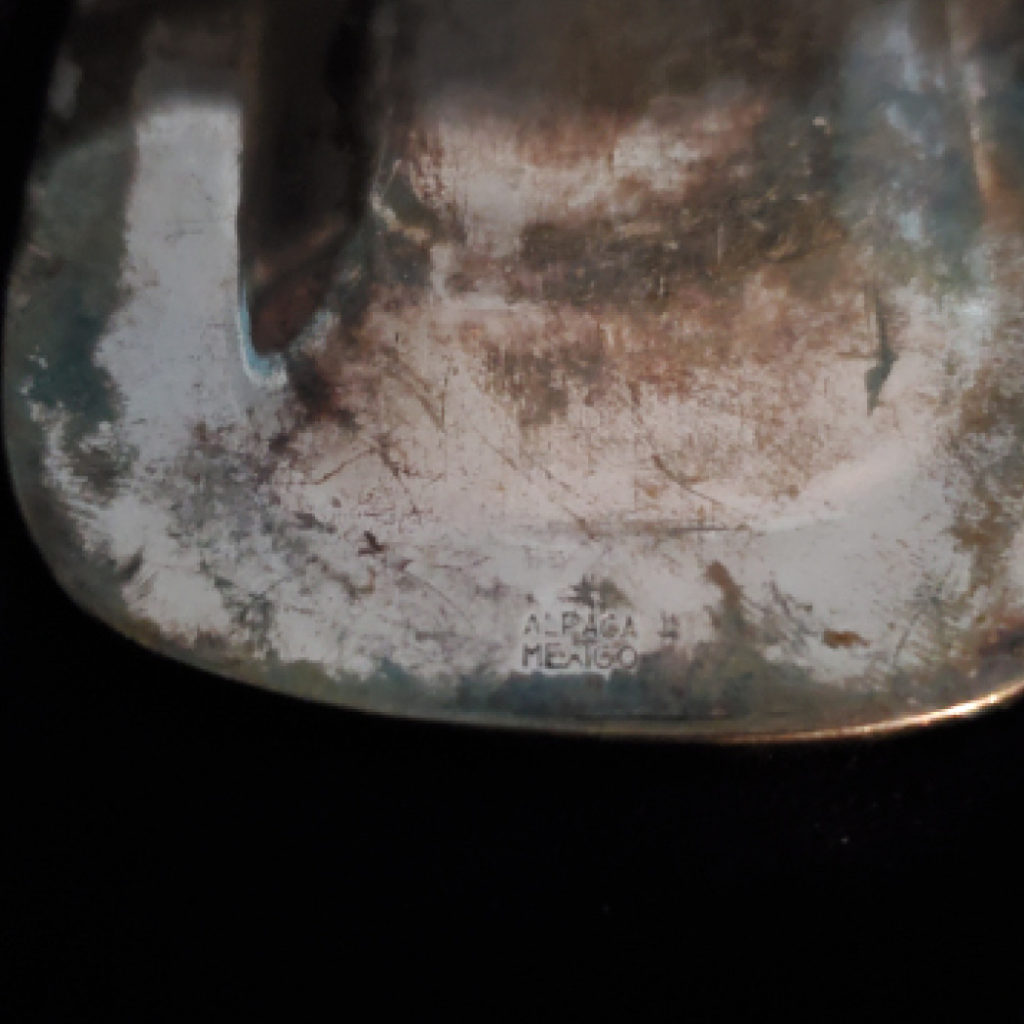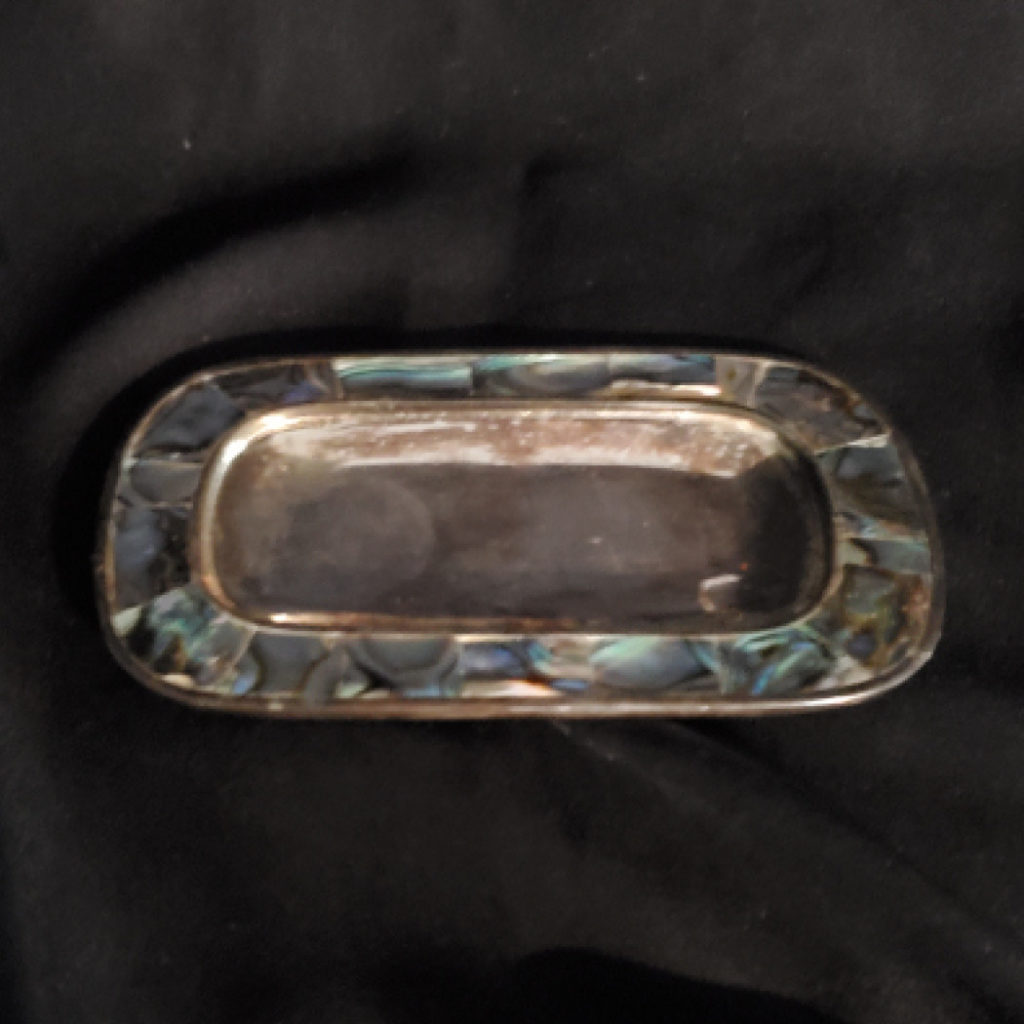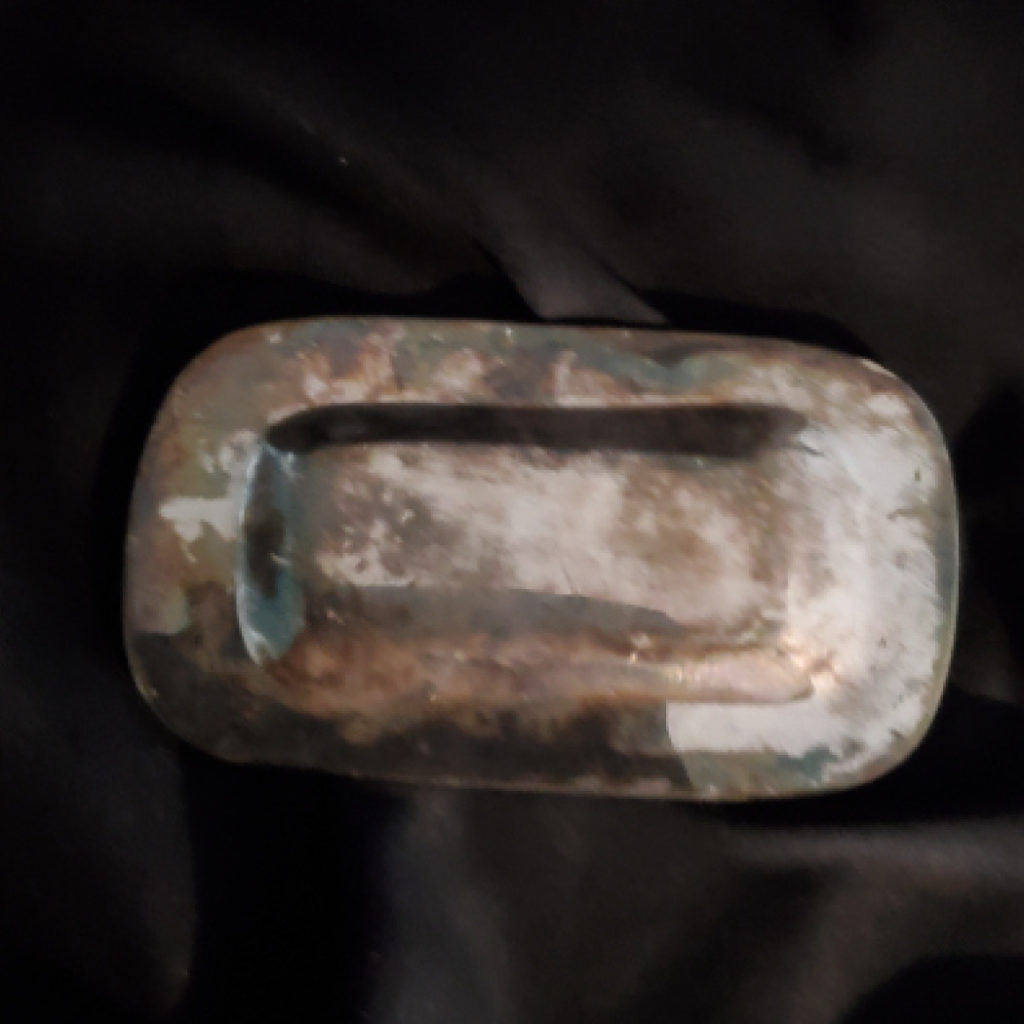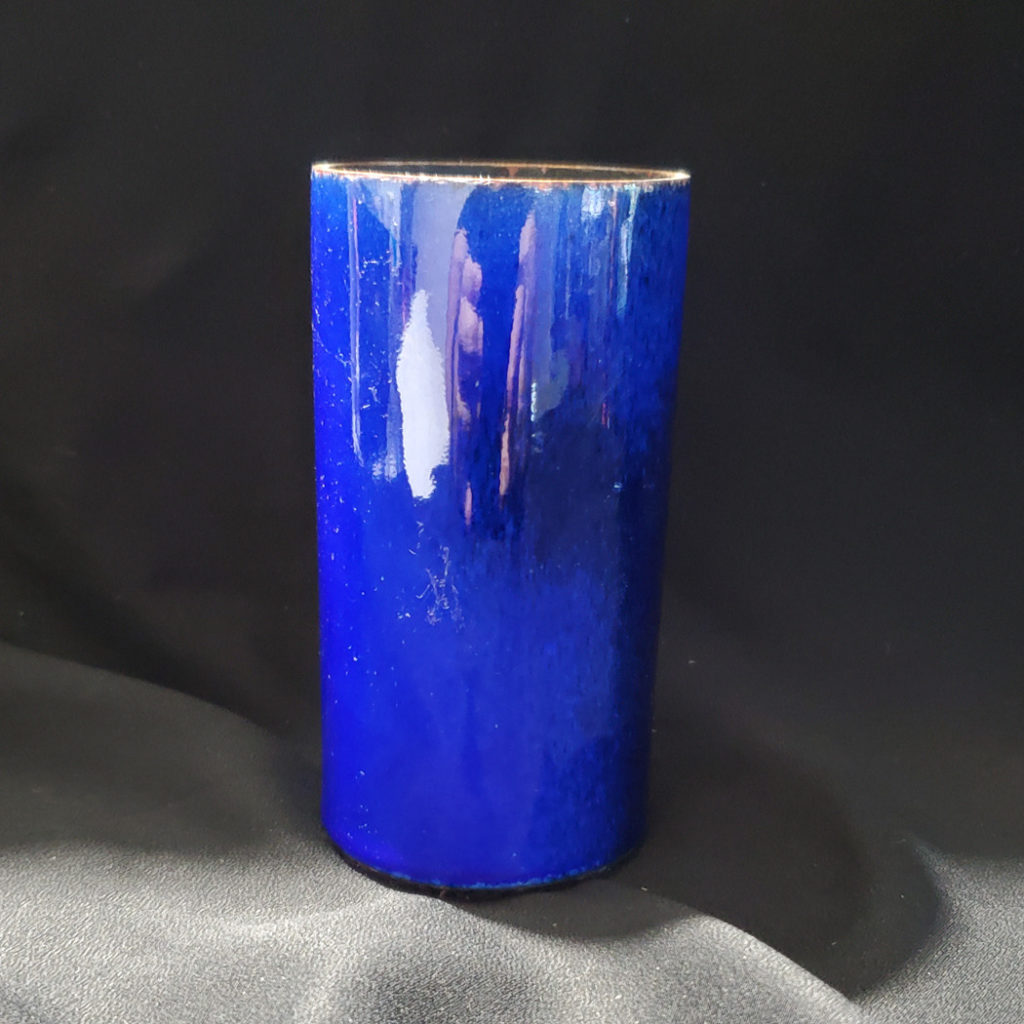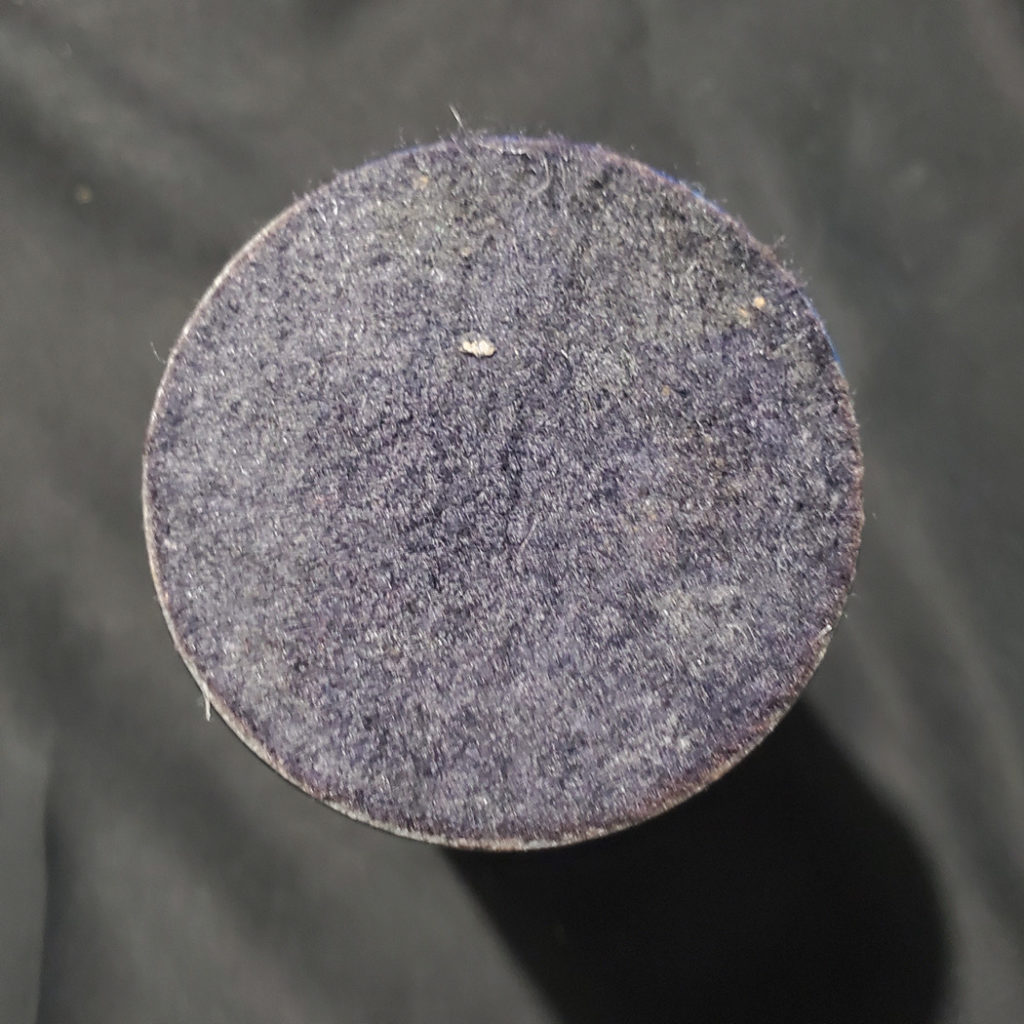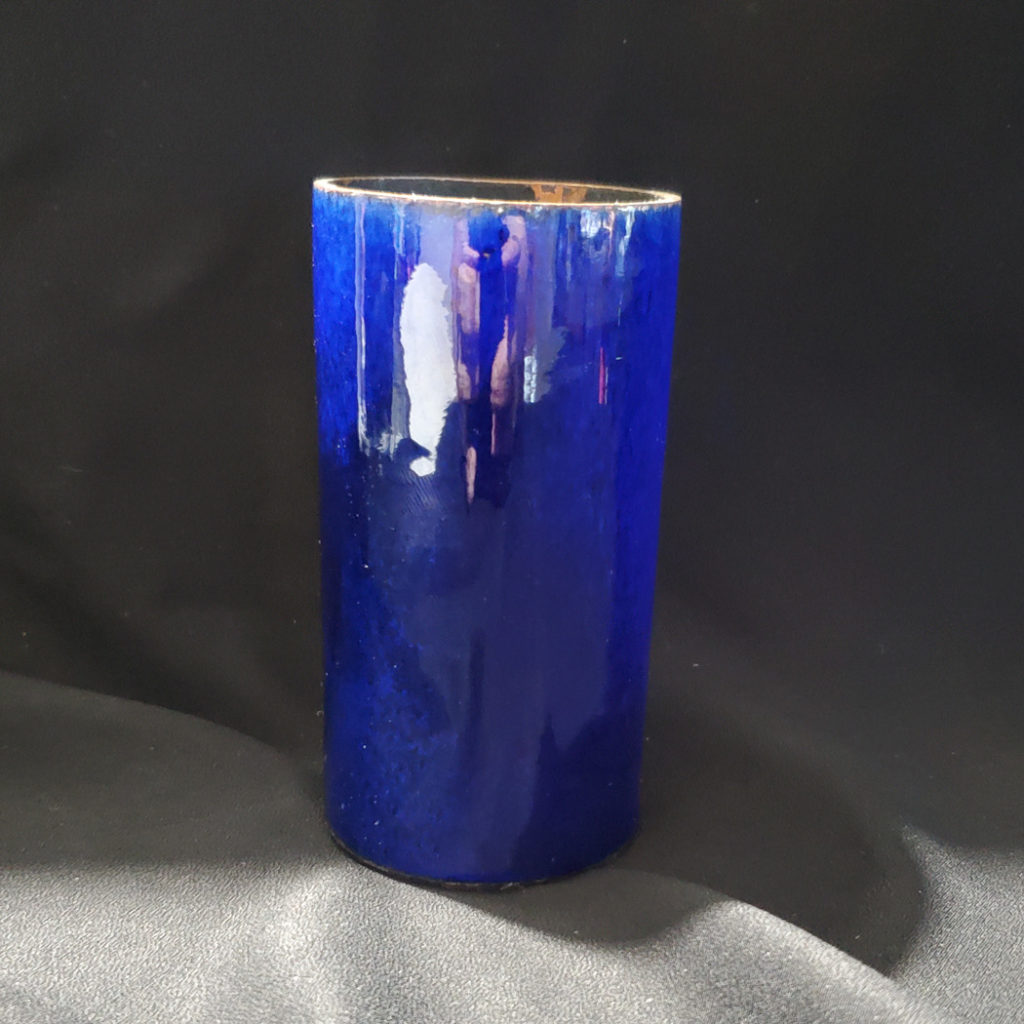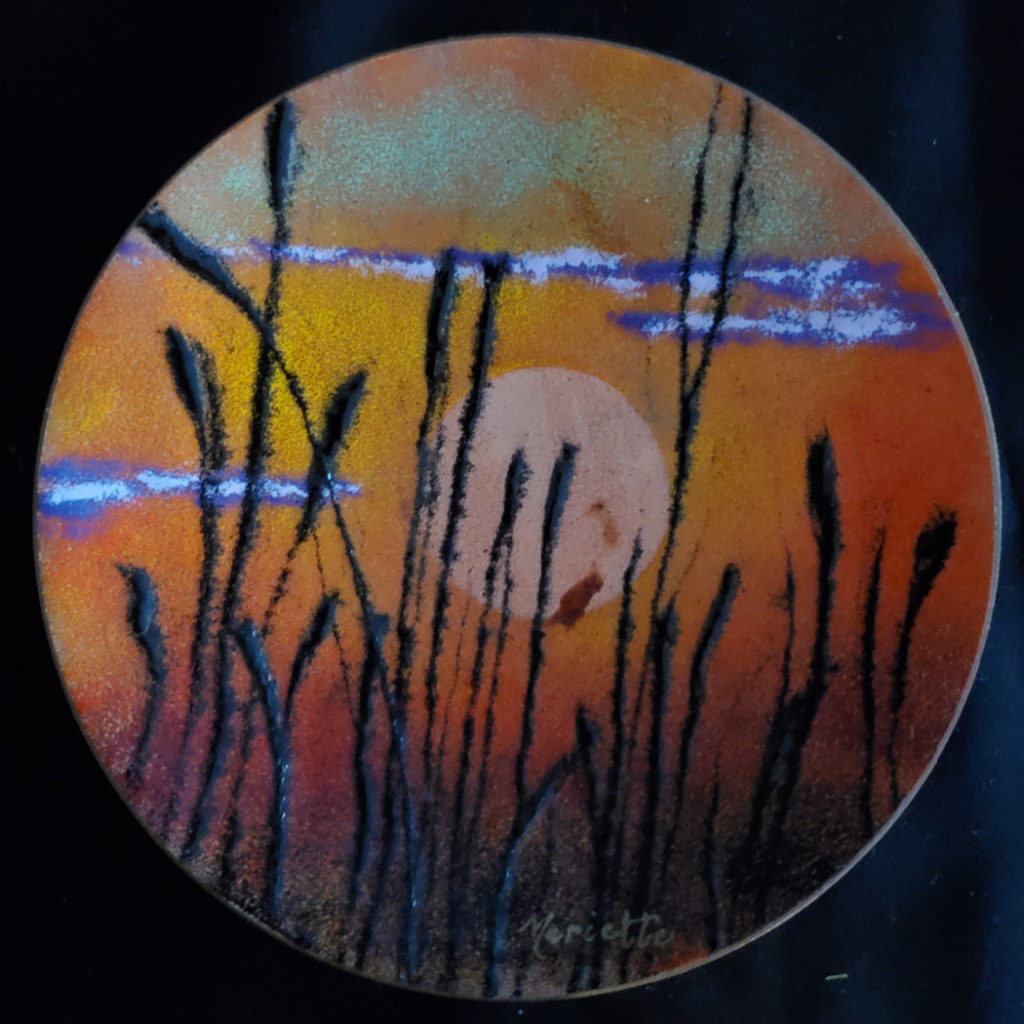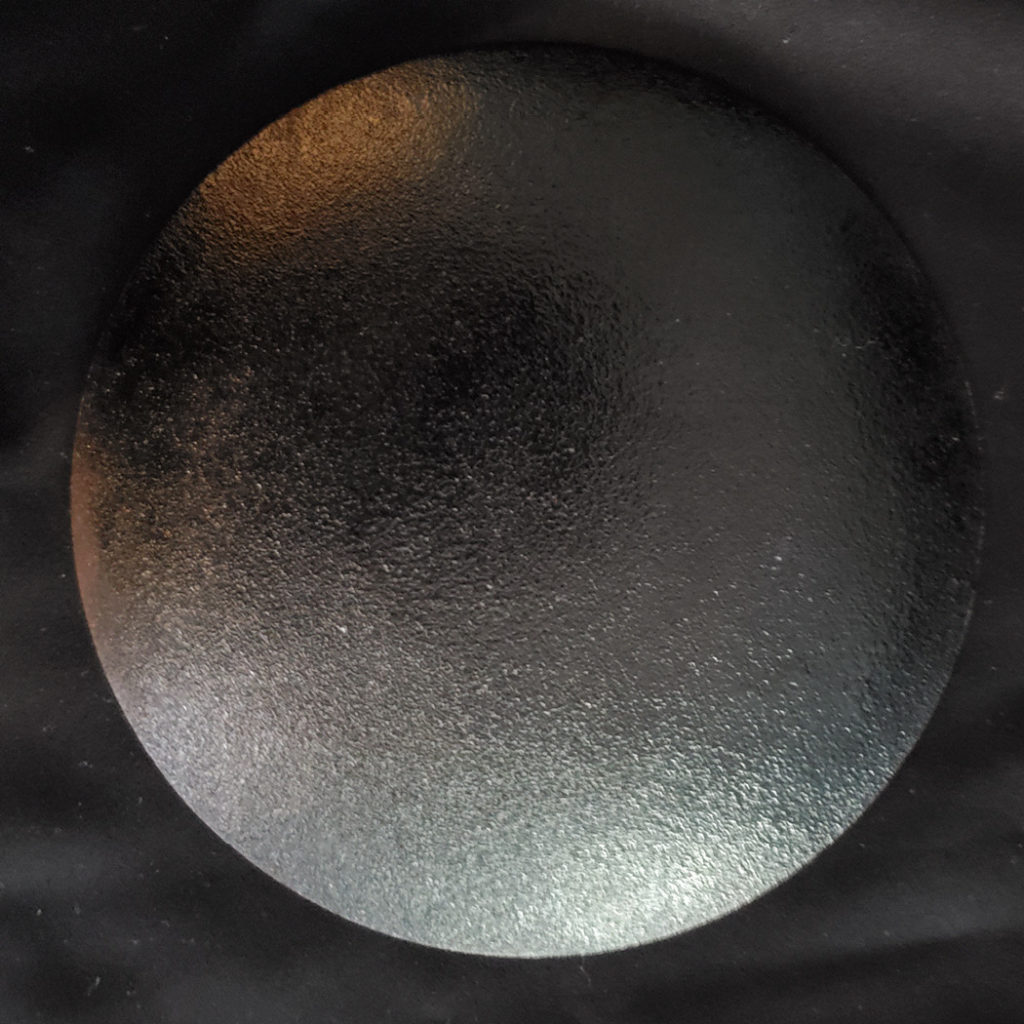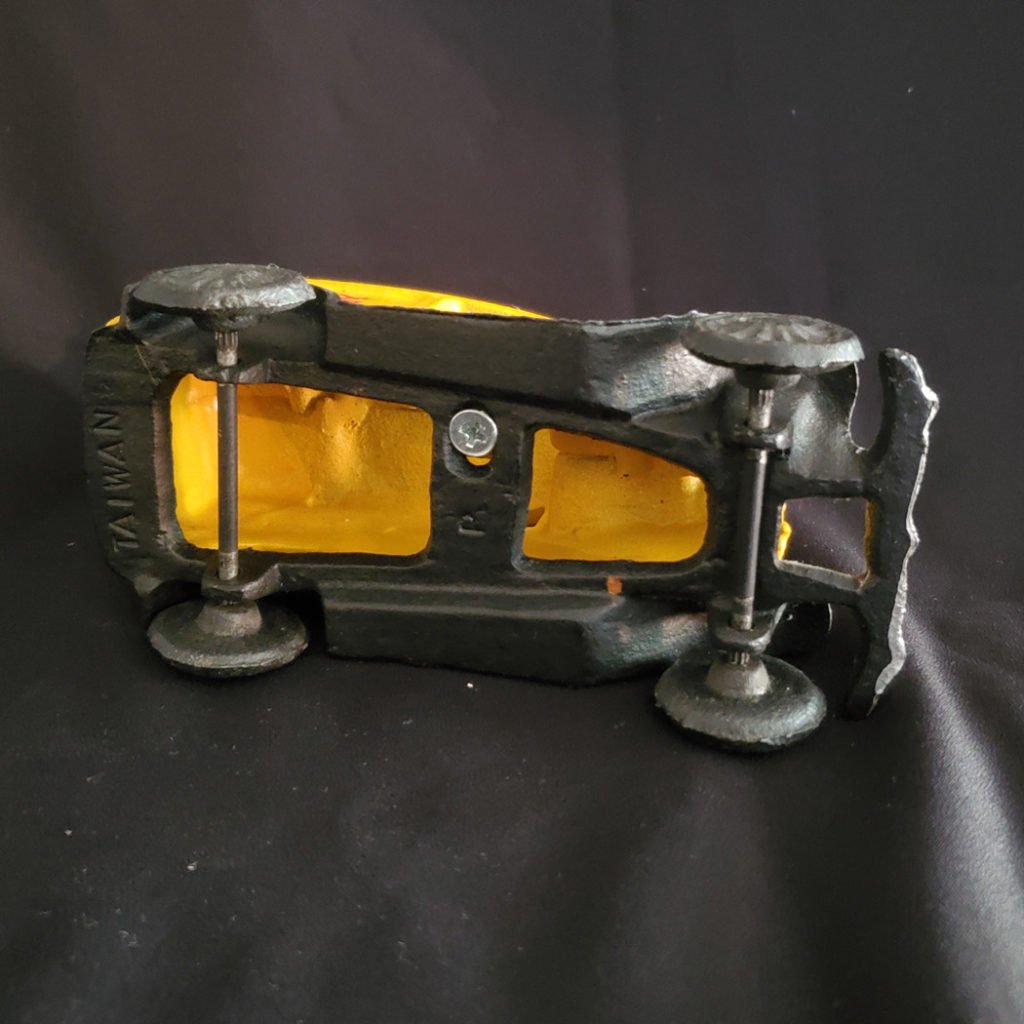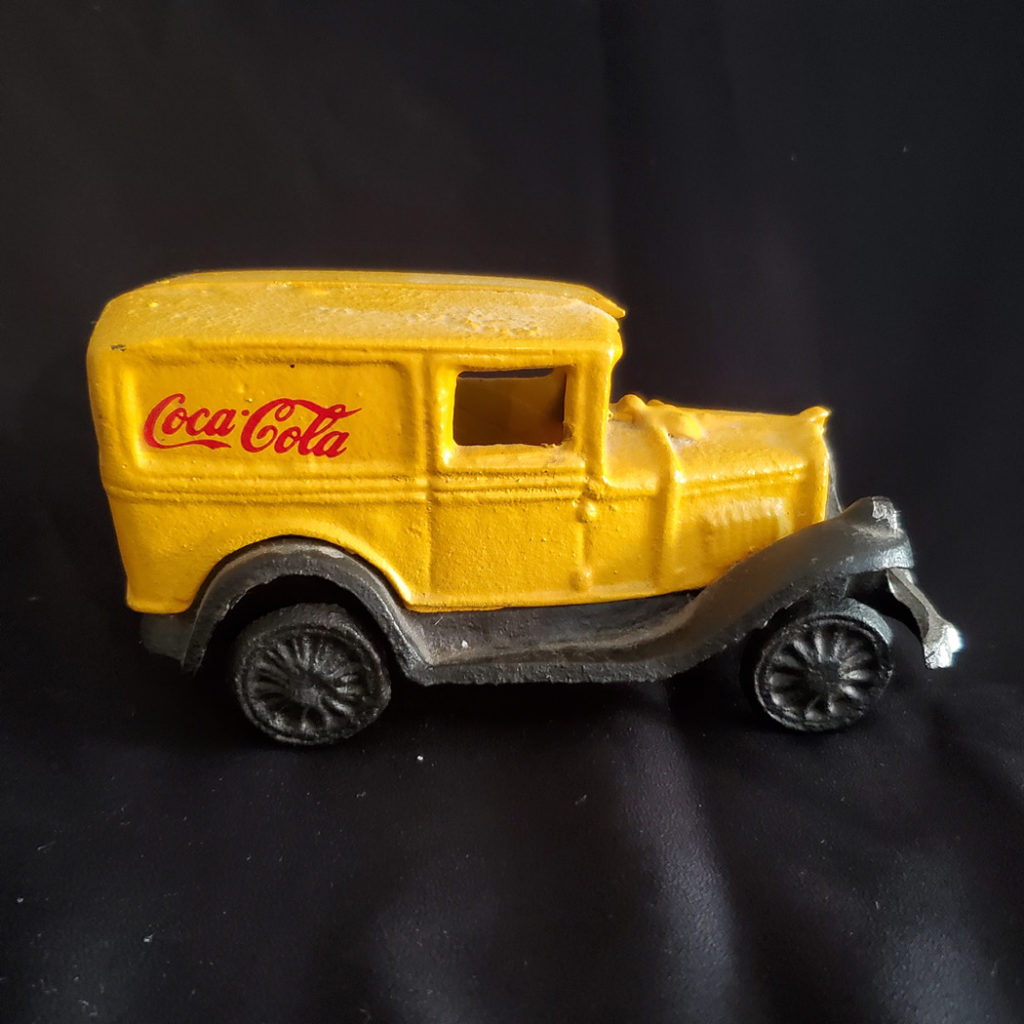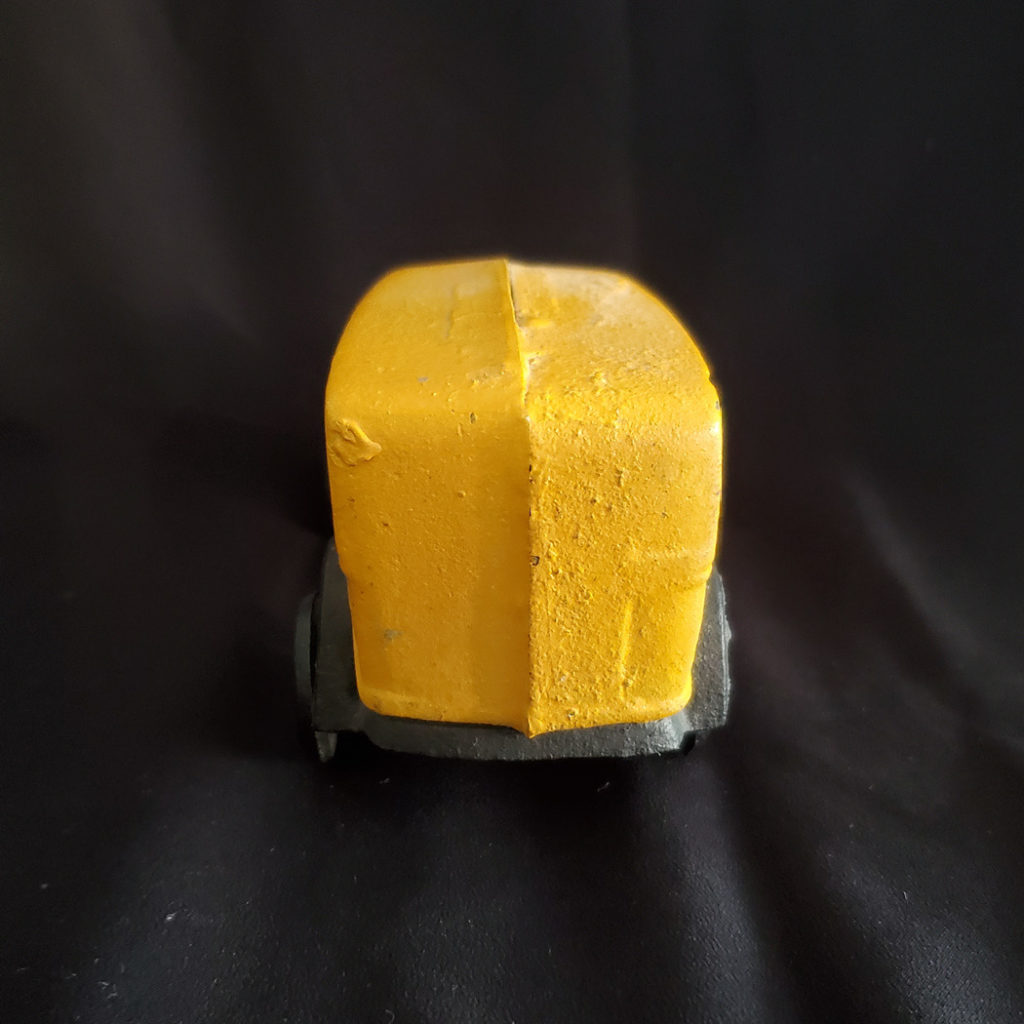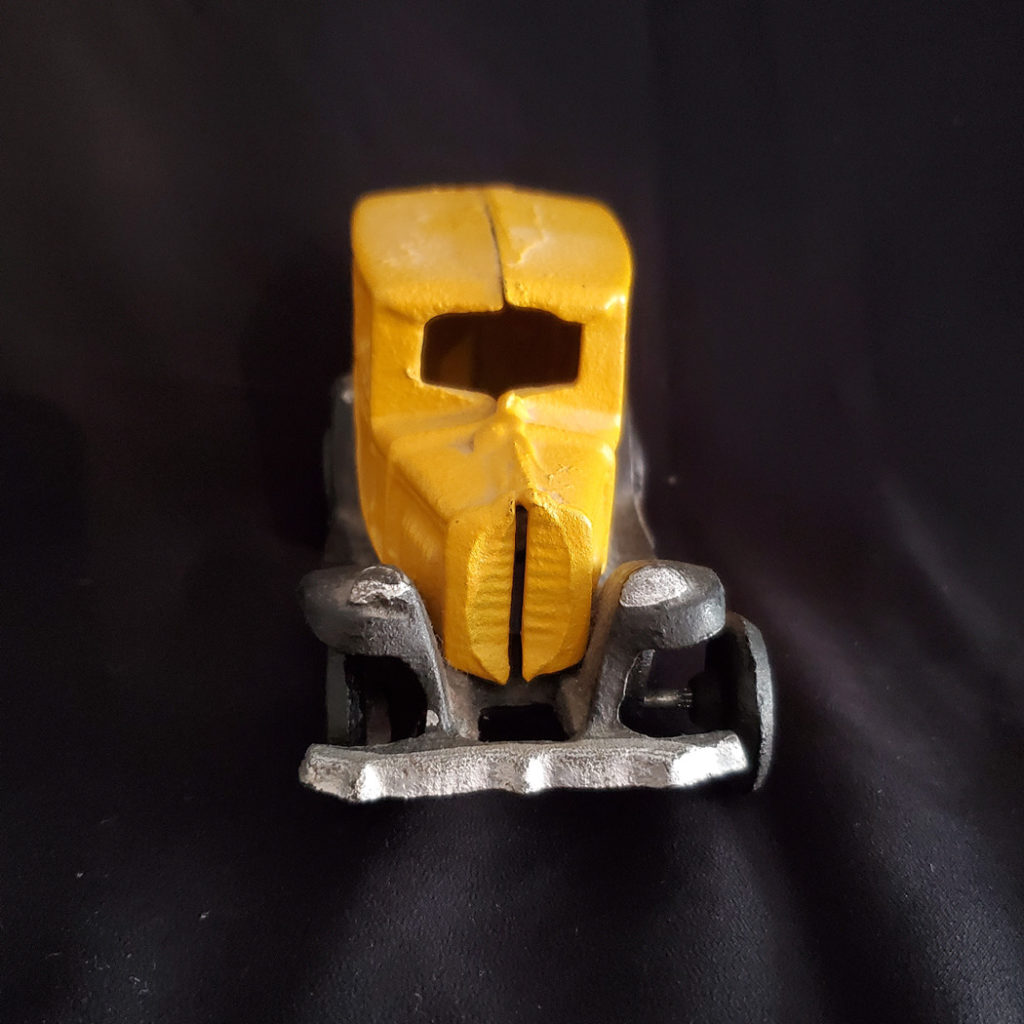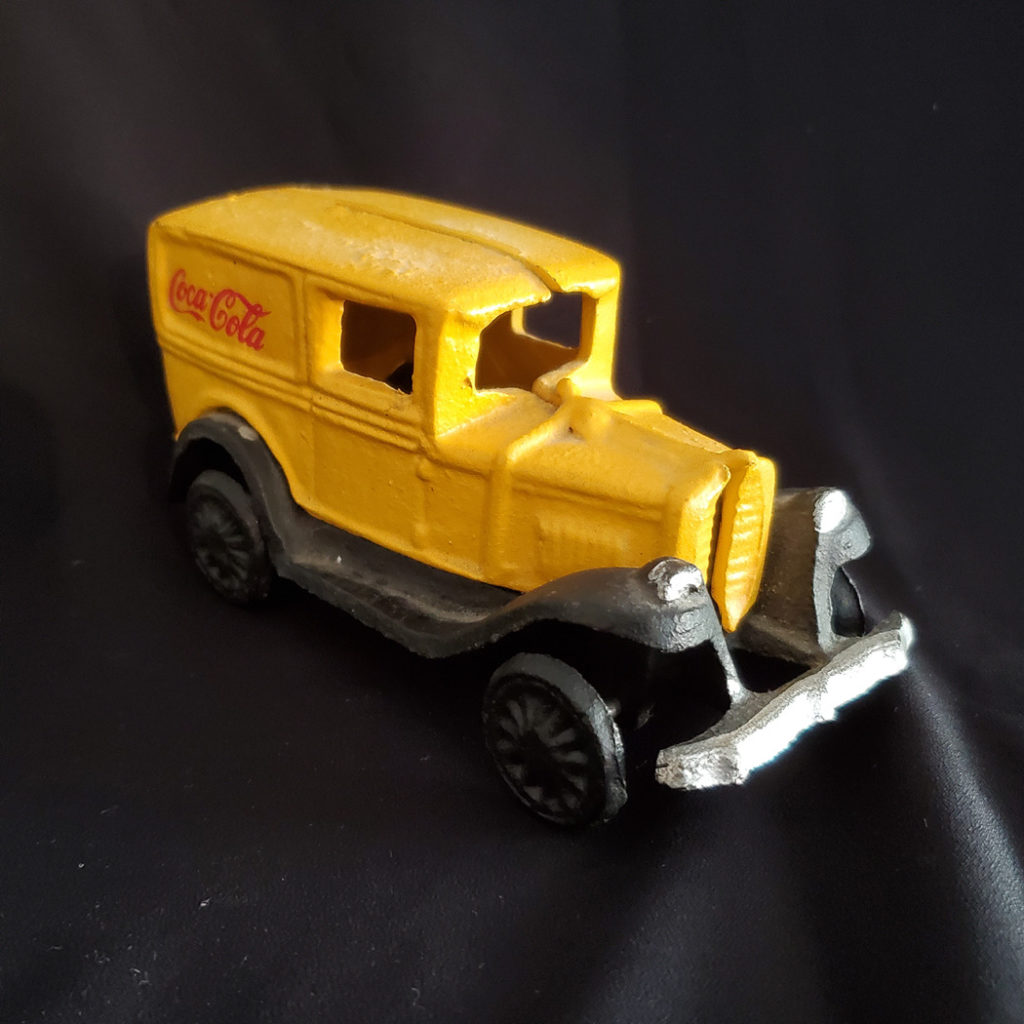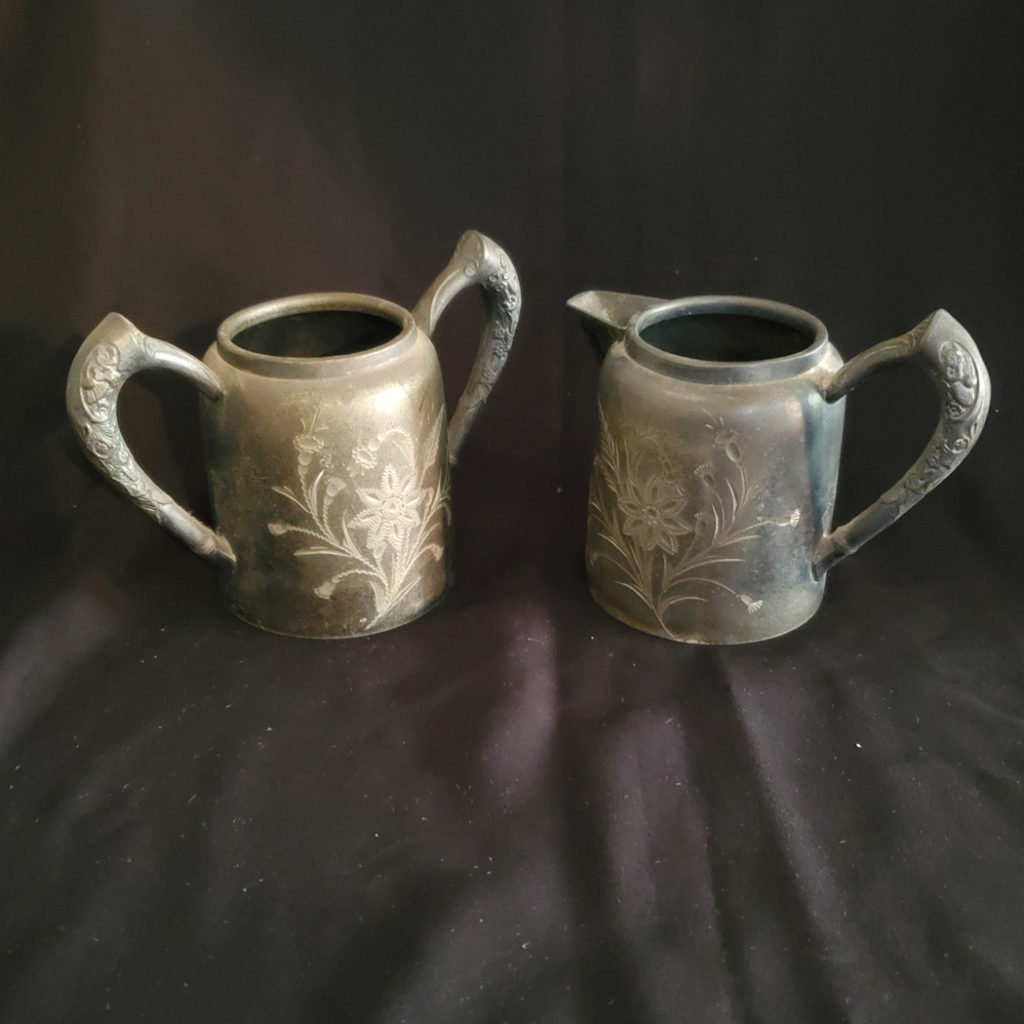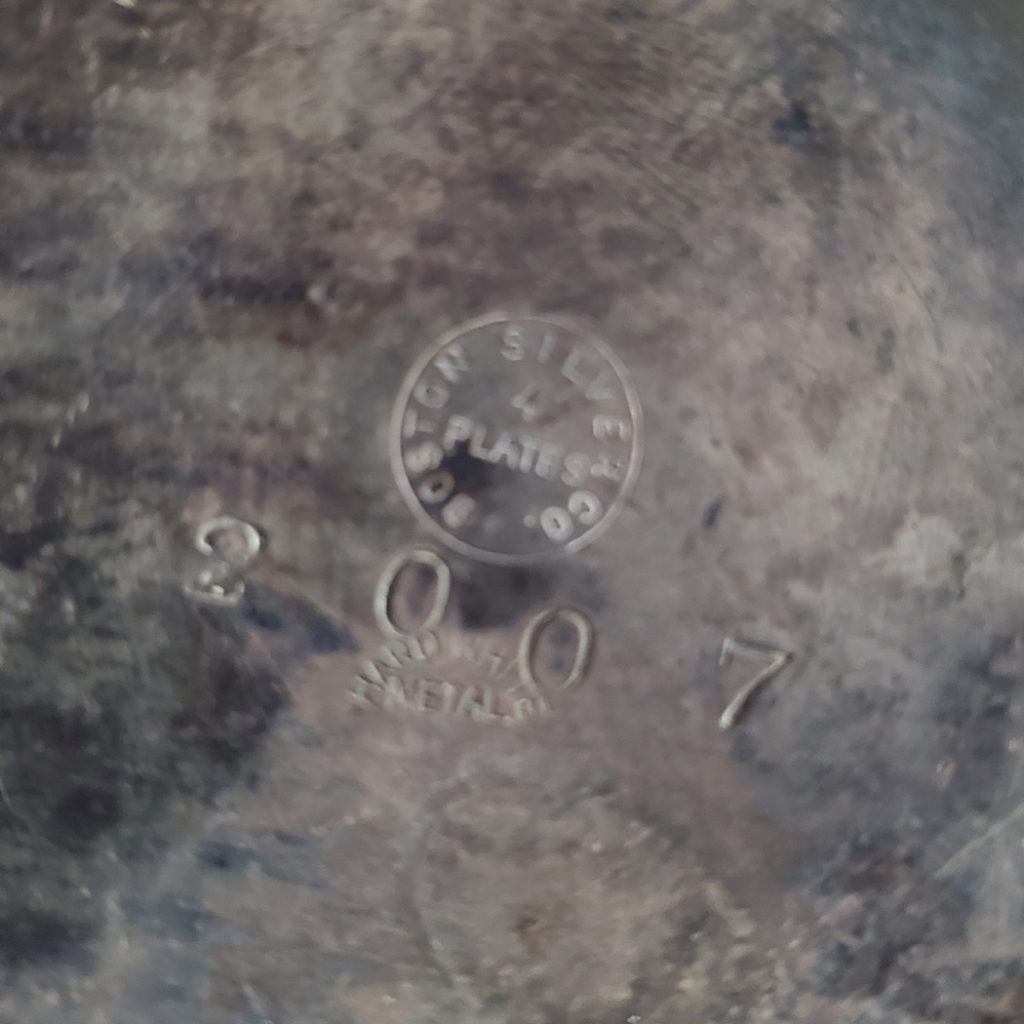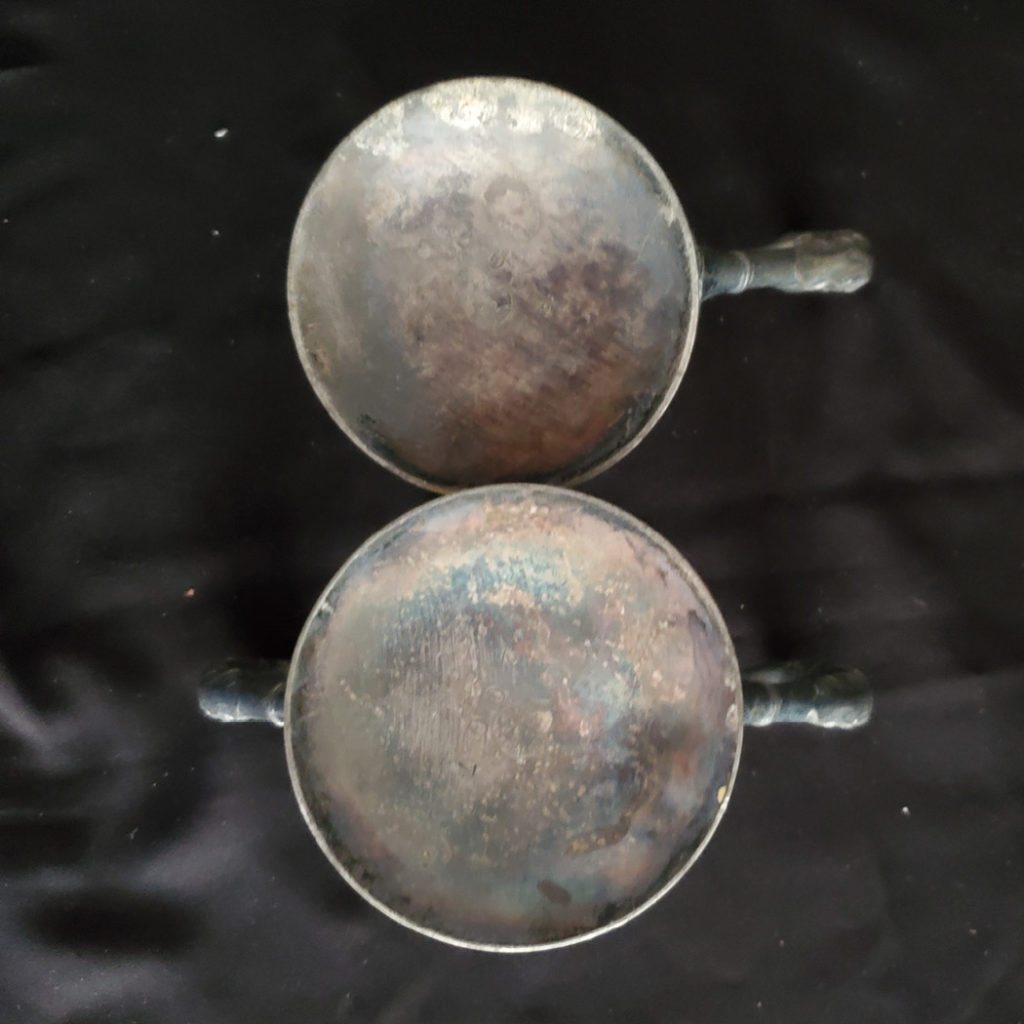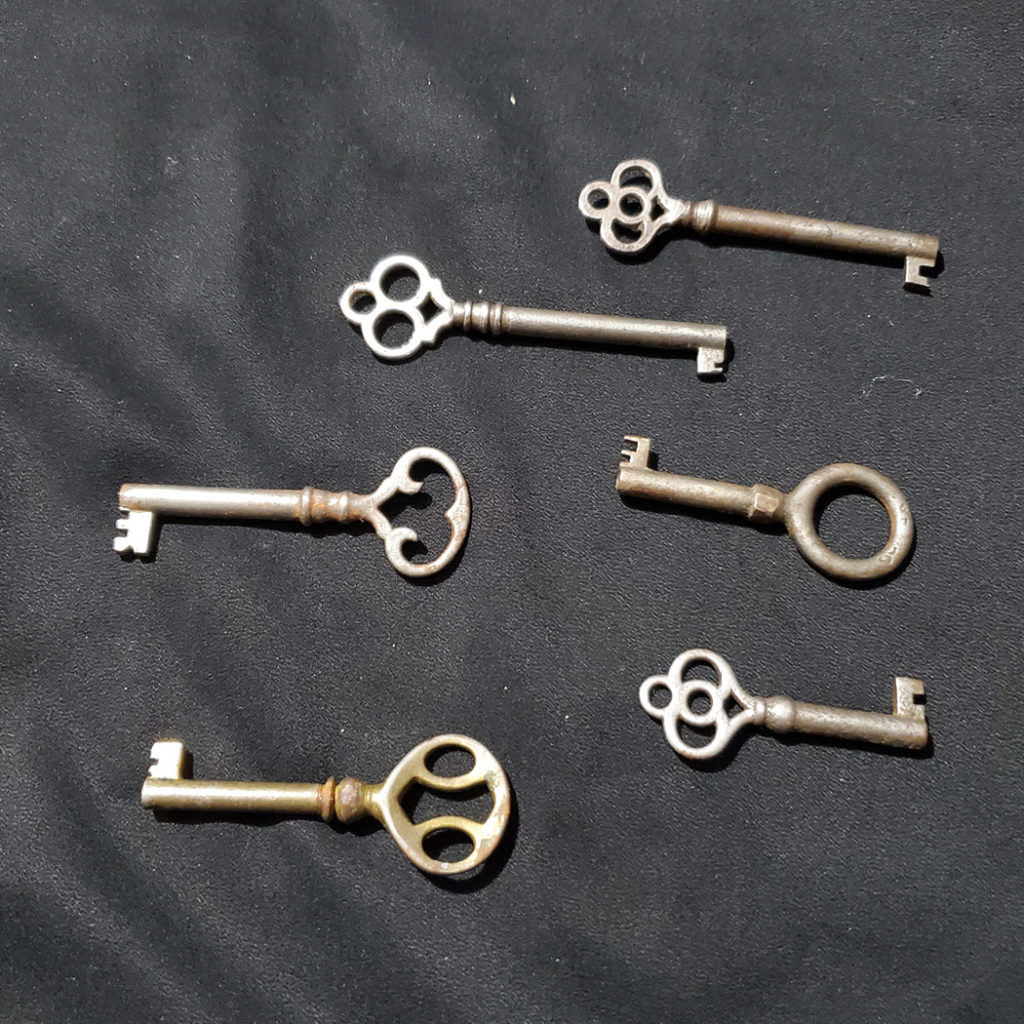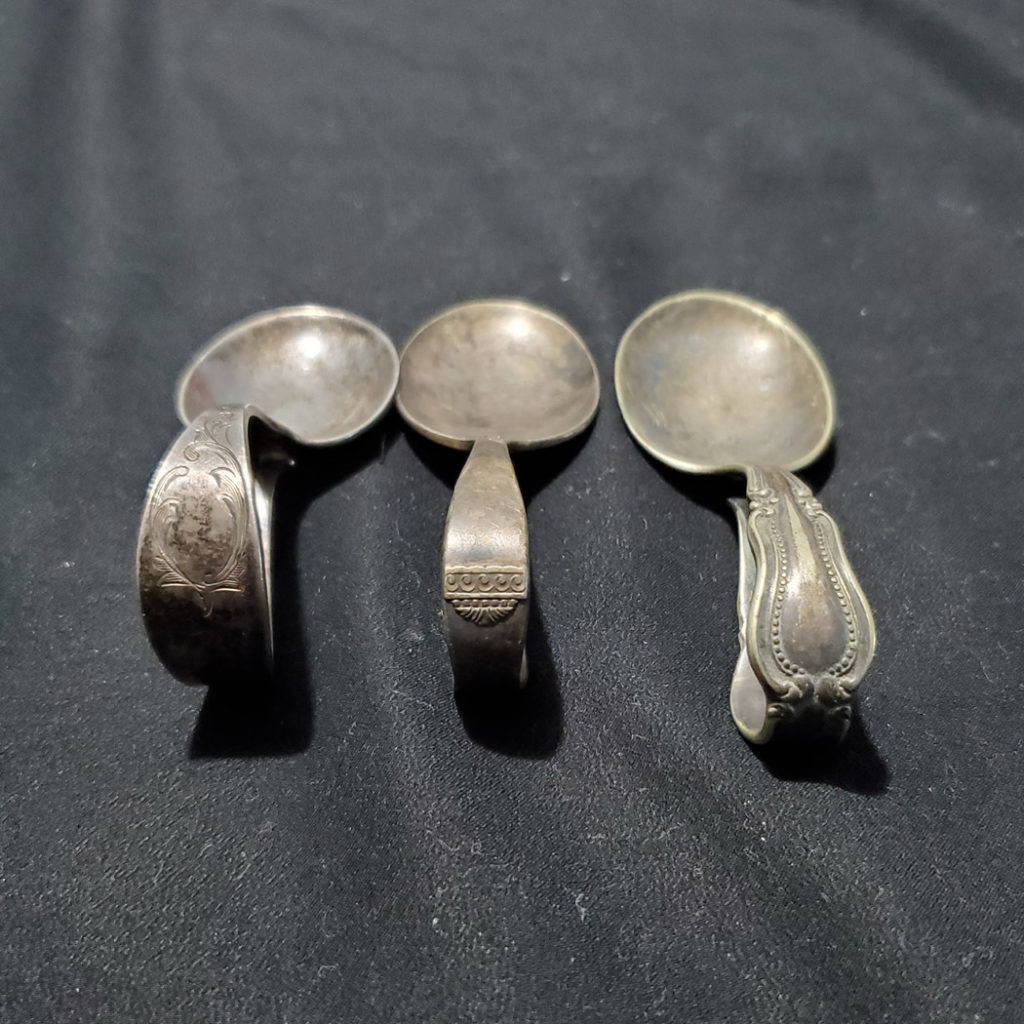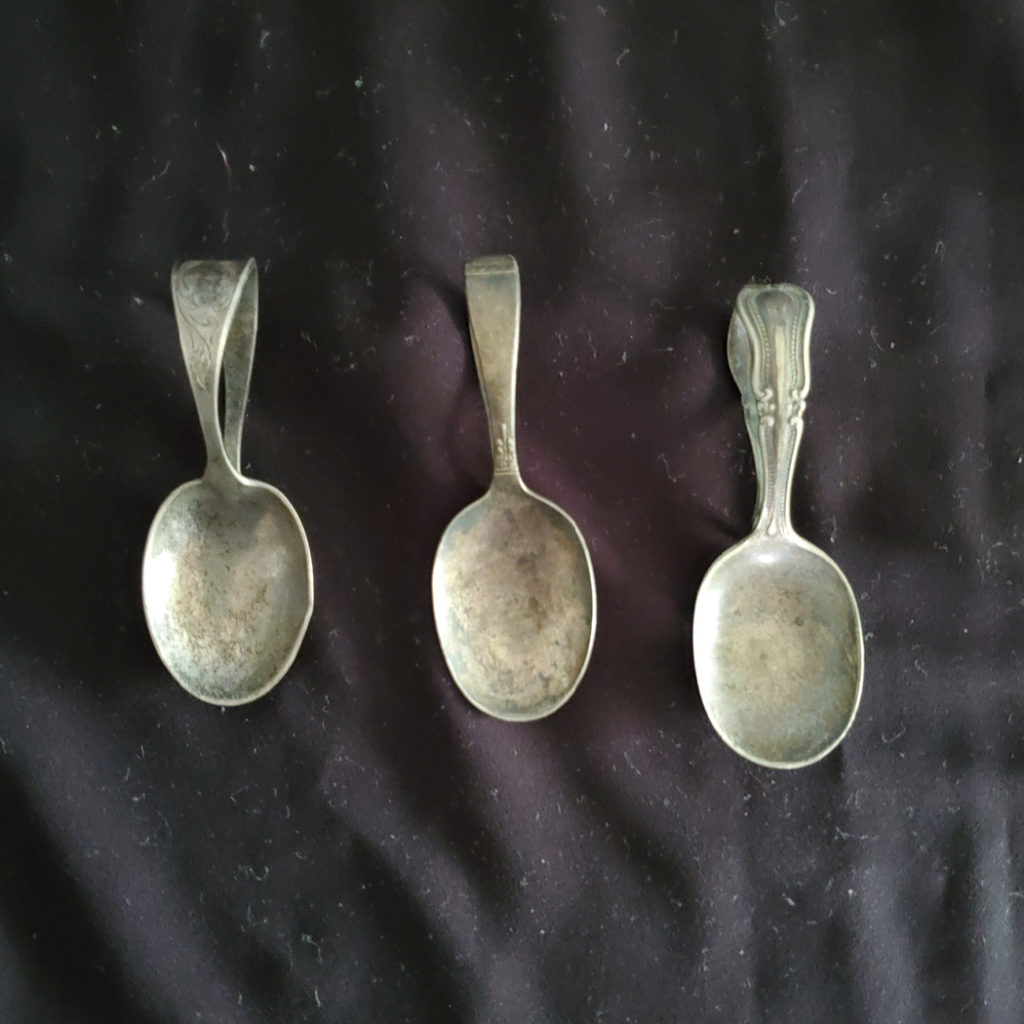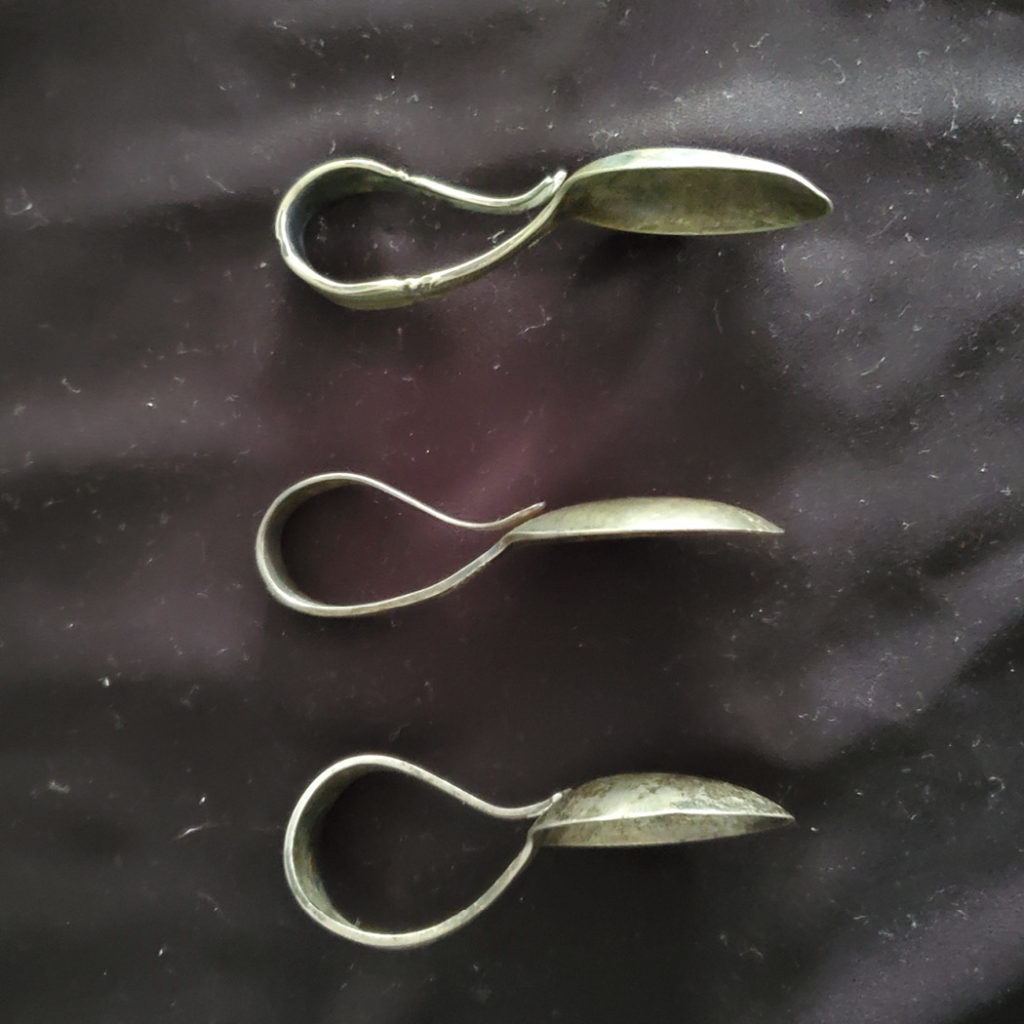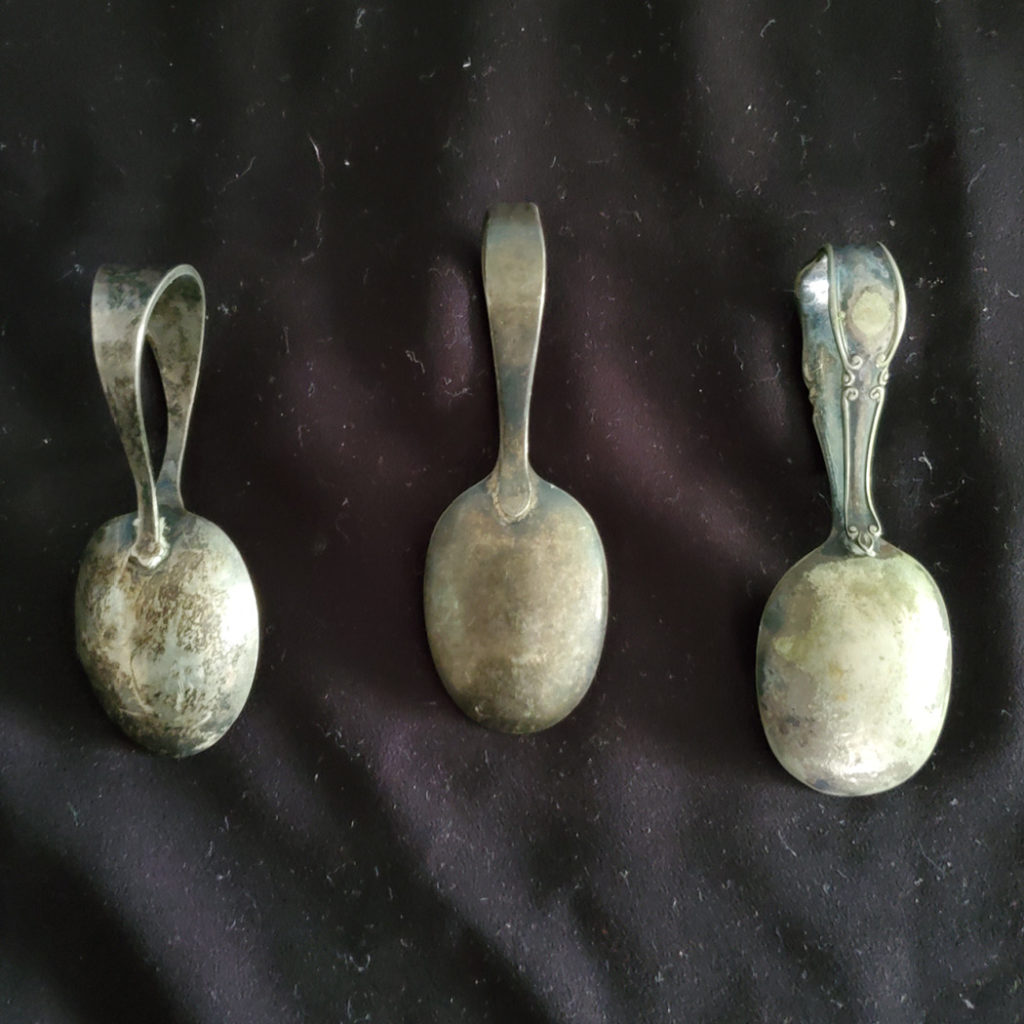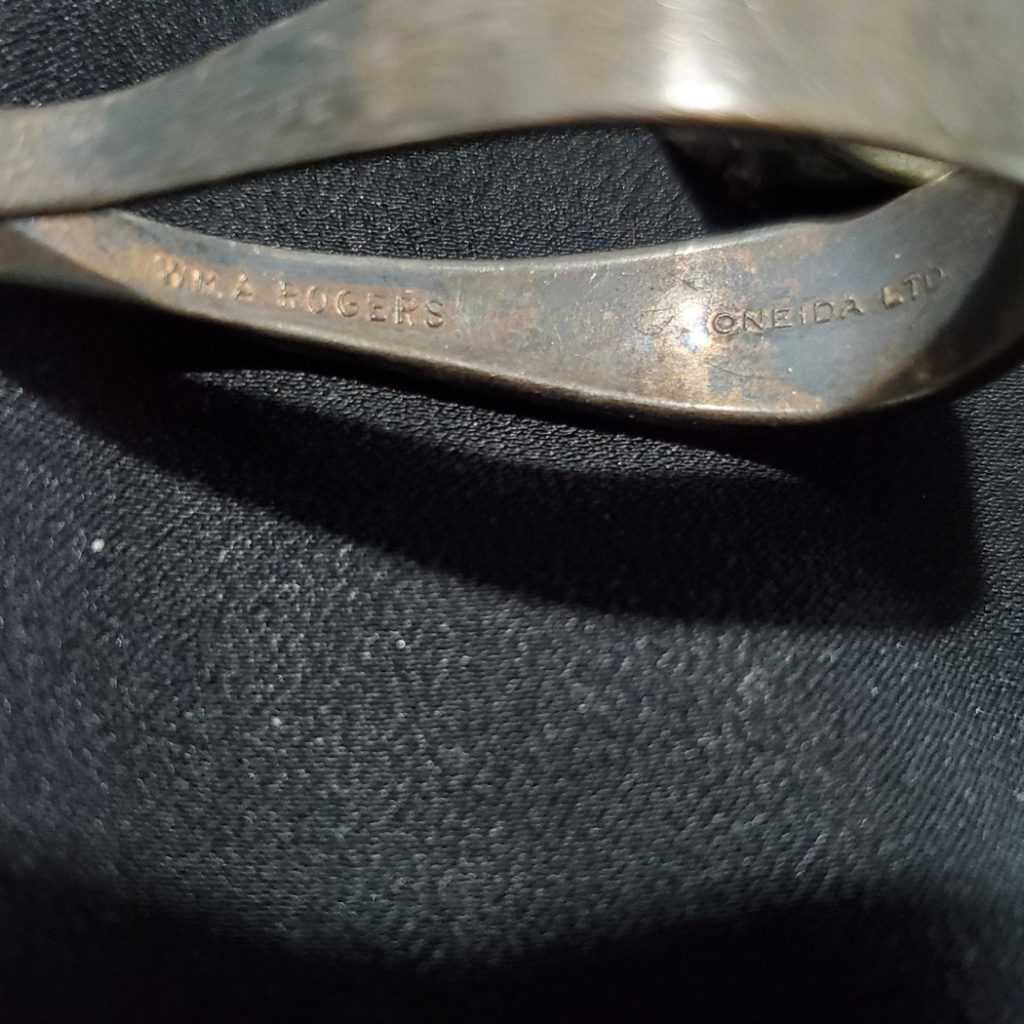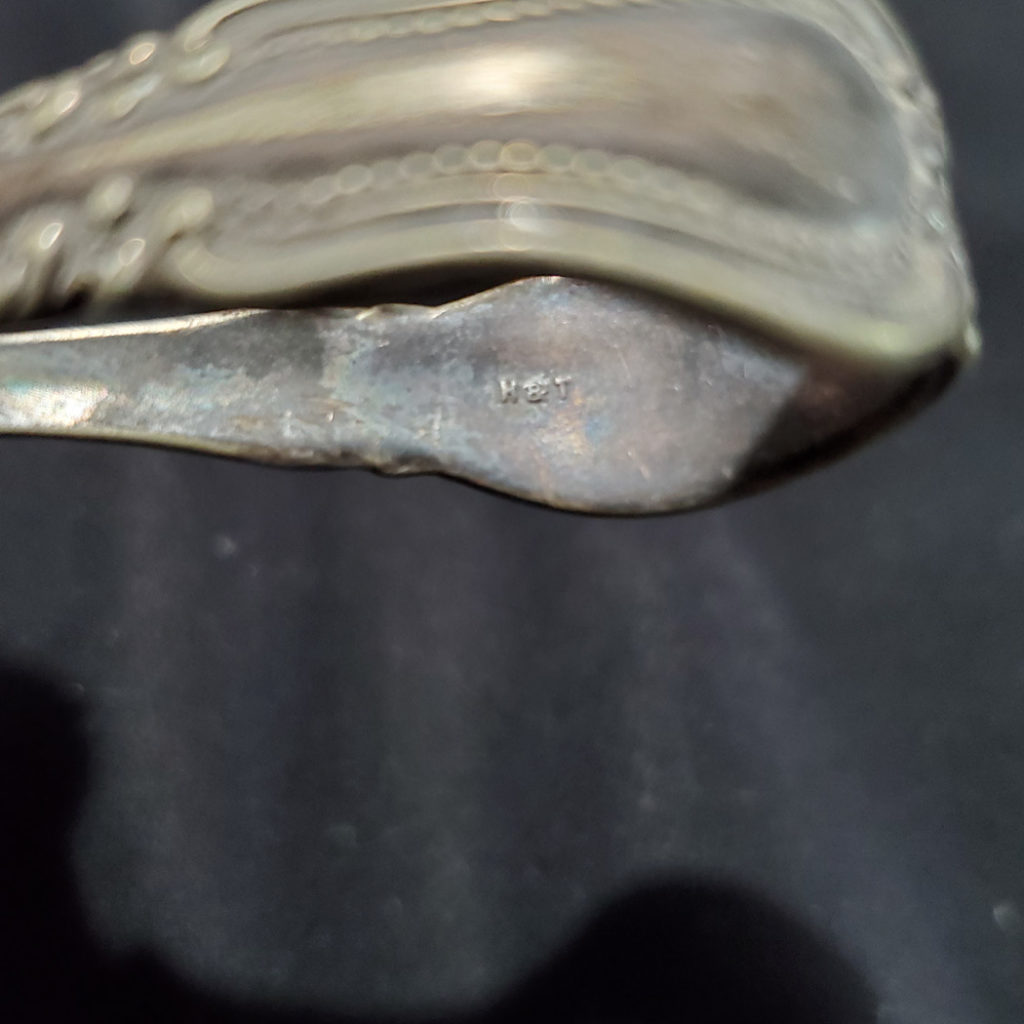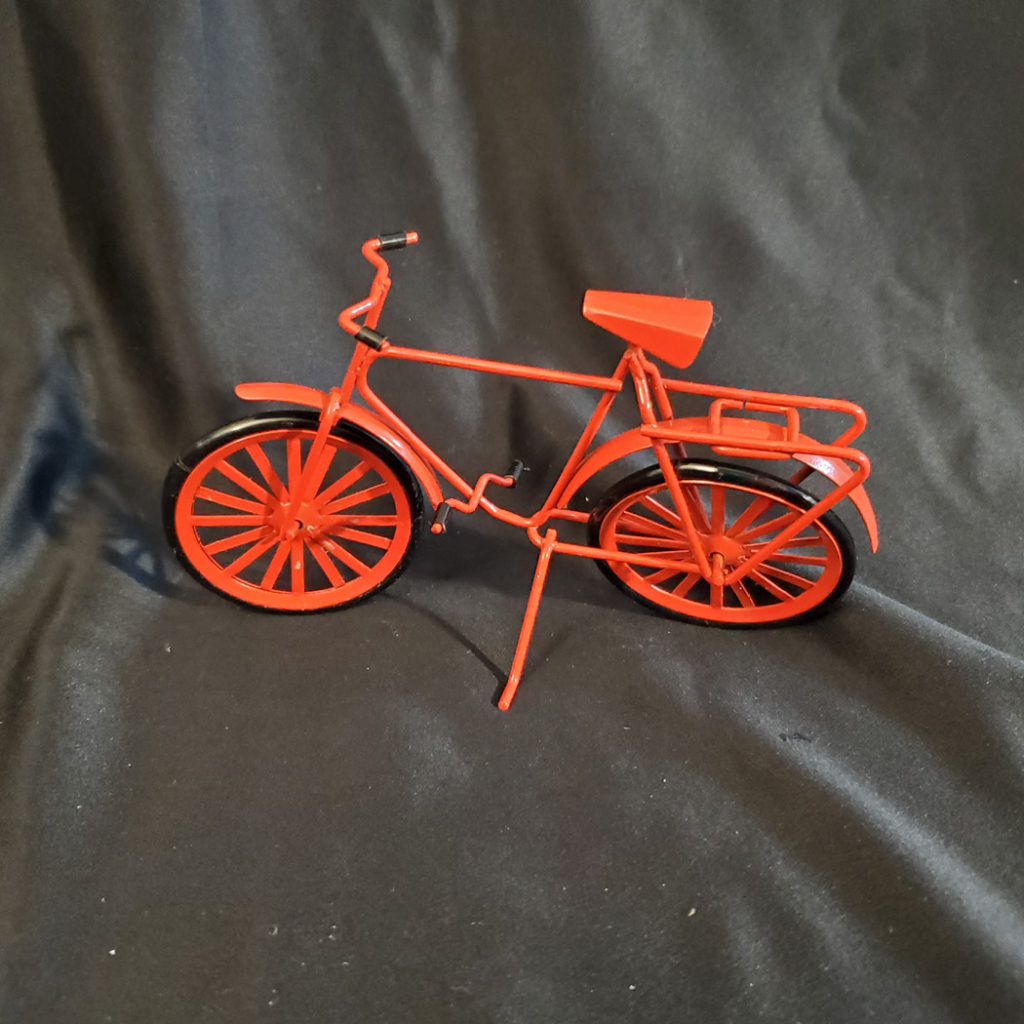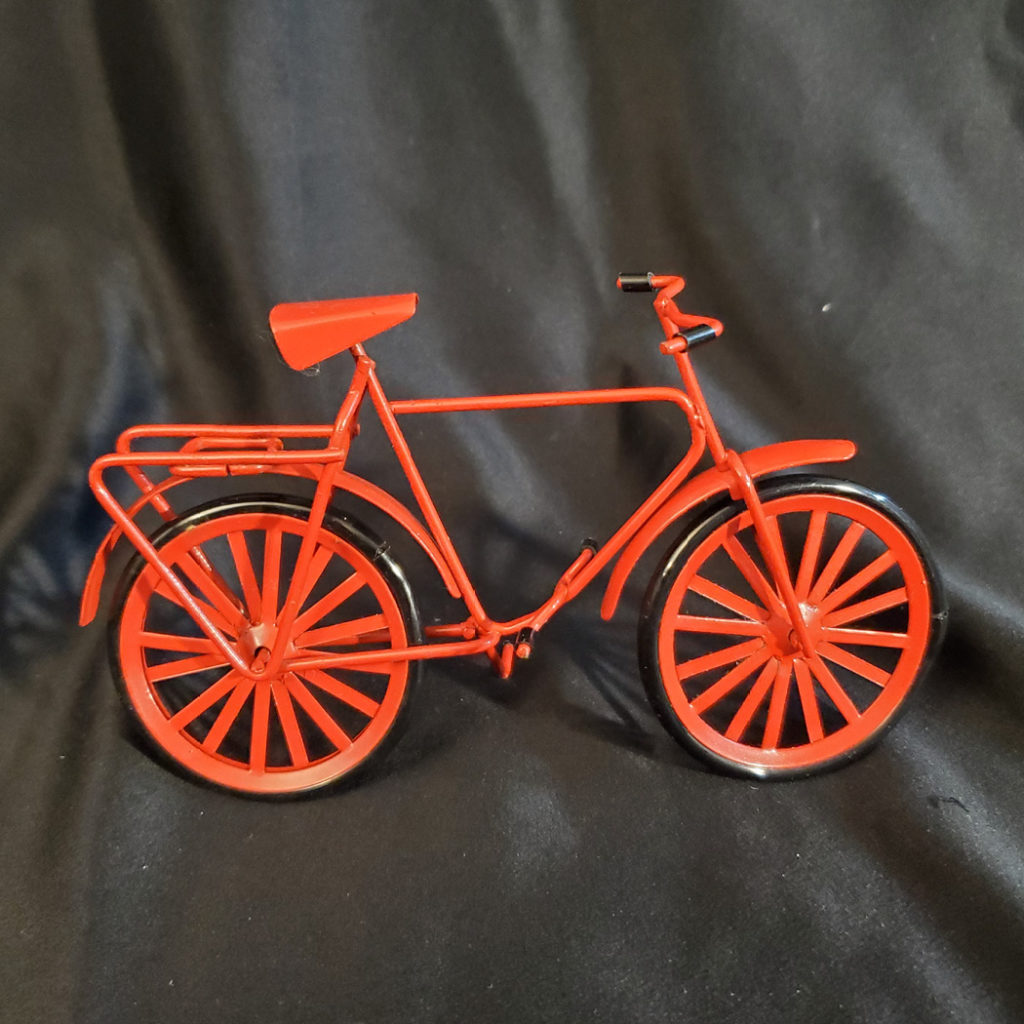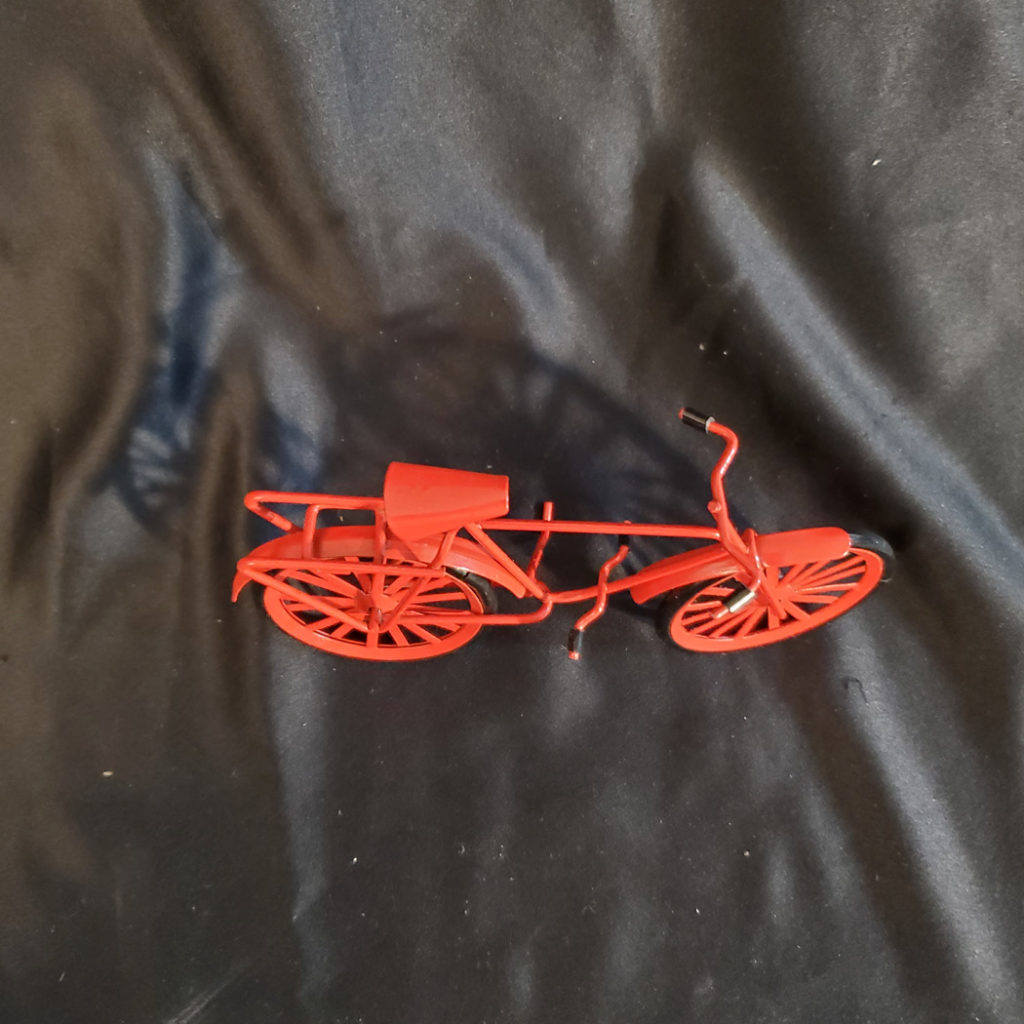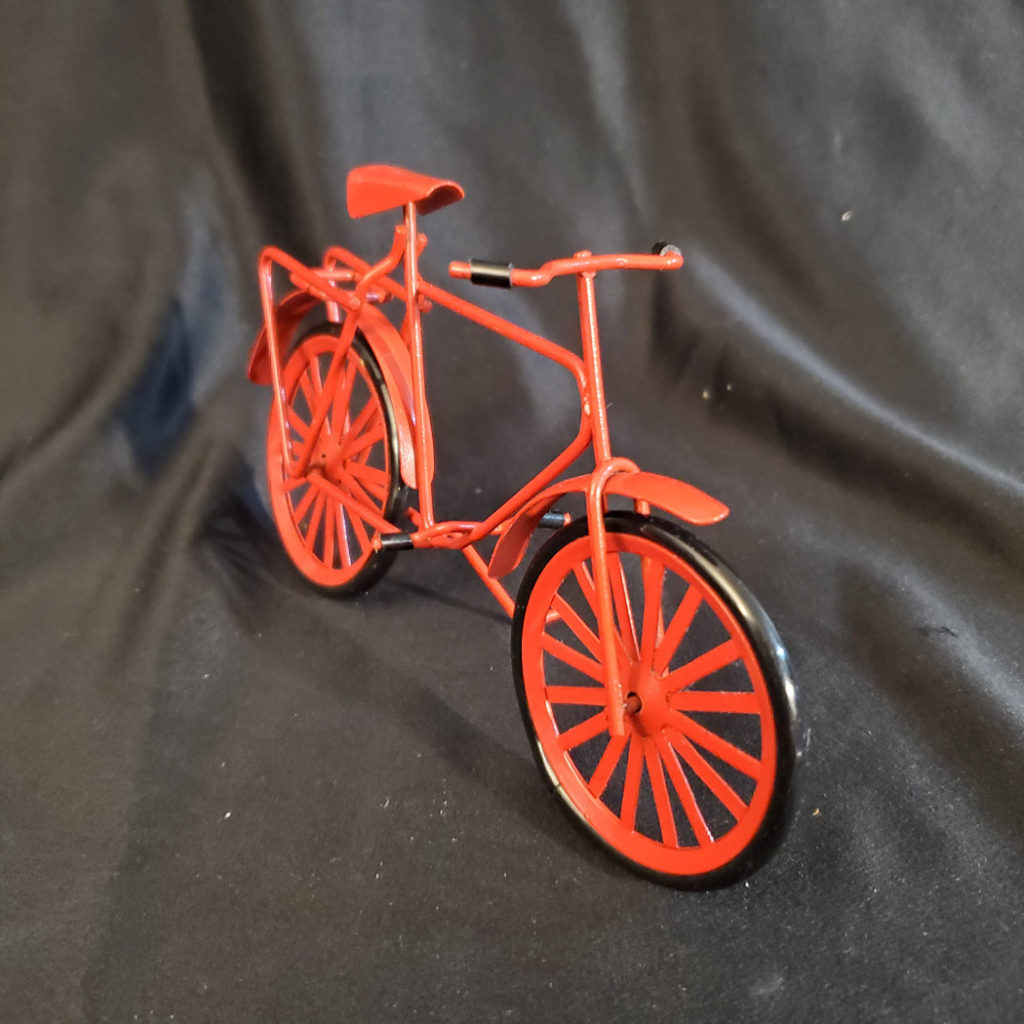Metal Arts
The metal arts included on this page include recycled and industrial art, copper and enamel cookware and decorative pieces. I have separate sections for brass and bronze as well as pewter items. Please visit those sections.
#1083 This is an impressive large model with lots of detail A great gift for a motorcycle buff!. It measures 23 x 10 x 12 cm
#1099 Industrial sculpture of cellist with nuts bolts washers. If you have someone who plays cello in the family would make a great gift. The sculpture measure 9 x 14 cm. No markings and not sure of the age. I suspect that it is recent.
#1118 Artists in Haiti recycle steel from drums previously used to transport oil and other materials into art. This site shows you how they do it. This one is signed by artist, Johnson Augustin. The industrial sculpture artwork in this example is intricate and detailed. The subject is a popular one, the tree of life. It measures 43 x 43 cm. The result is a beautiful, unique, hand made piece of wall art.
#1257 Ornate artistic metal work in Turkey dates back more than 2000 years. In recent times, Turkey has been famous for the export of etched copper such as this vintage ewer. Learn more here. The size is 23 x 13 cm.
#1306 Ghalamzani is an Iran ancient metal art. It is repousse / engraving using chisels and hammers on different metals such as gold, silver, copper, brass, and some alloys. Its origin dates back to 5-7 thousand years ago; though its documented history goes back to Sassanid era, about 700 A.D. Isfahan is the main centre for this art. The most common is to work in copper and then “tin it” with a coating of silver allowing the copper to show through.
This tray has a traditional motif of peacocks or pheasants and flowers. It is 33 cm or about 13 inches. I cannot determine age but believe it to be about 90-100 years old.
#1373 Meenakari wall plate of unusual design and colouring. Most are blue shades without this much white. The scene is Naqsh-e Jahan square looking towards the Sheikh Lotfollah Mosque. The Mosque looks different today. The entrance is all amazing blue tile not mostly white as pictured here. I found a picture taken in the 1950s that had it looking more like this. Perhaps the tiles had been damaged and were being restored as the 19th century pictures show it as it looks today.
Researching this art form, you find that the style is not only rare but this example is a fine one depicting a period where things looked different than they do today. It is hard to date this definitively but I would say between the 1920s and 1950s.
#1551 Meenakari dish of unusual design and colouring. Most are blue shades without this much white. It has a floral centre. I would say this is likely from the 1950s or earlier. It measures 24 x 15 cm.
#1562 Large copper art dish signed by the artist. It includes a lapis cabochon. It is 29 cm across.
#1223 Yugoslavia was known for producing enameled ware or enamel ware throughout the 20th century. Under Tito it was centralized and marketed throughout the world. This piece is a wonderful orange teapot that can be a statement piece in your décor. It measures 14 x 15 cm.
#1374 A steel pan drum for calypso music. Hand painted. 27 x 6 cm.
#1420 These are mid century reproductions of older designs. They look wonderful together. One is taller than the other. One has a bit of damage to the spout and the other is perfect. Both can be cleaned up and polished. I left them as is as some may prefer the tarnished antique look. they measure as follows: 15 x 24.5 x 14 cm and 18 x 26 x 14 cm.
#1421 This little tray is of the alpaca silver and abalone popular from the 1960s to 1980s. Alpaca silver is also called German Silver and was developed to look as close to silver as possible. It actually does not have silver in it but it is an interesting, popular metal for jewelry and decorative items and items made with it do have value, just not silver value. It is made of nickel and zinc. This little tray was likely made to hold small salt and pepper shakers but serves well as a decorative ring tray. It is 9.5 x 5.5 cm.
#1258 The bottom of this vase is covered with felt. It is unclear who the artisan is or where it was made. These could be found made in Canada in the 1970s and I suspect that is what this is. It measures 10.5 x 5.25 cm.
#1377 Painting is well done and signed. It measures 14.5 cm across.
#1375 Advertising giftware from the 1980s or 90s. Made in Taiwan. Heavy. 14 x 7 x 7 cm.
#1376 According to the Jewelers’ Circular And Horological Review, 04 May 1898, these pieces were advertised fraudulently.
“Timothy Eaton, of the T. Eaton Co., Ltd., was charged before Police Magistrate Denison with defrauding Edward M. Trowern. secretary of the Retail Merchants’ Association, in the purchase of silver ware. Mr. Trowern. formerly a jeweler, purchased through an agent on June II a silver plated tea set which was advertised among the bargains as a best quality silver plated tea set. handsomely engraved, quadruple plate, regular price $12, reduced to $6. The saleswoman told the purchaser it was the best quadruple plate.
“Mr. Trowern examined the set and found it to be stamped “Boston Silver Plate Co. 4 plates. Best hard white metal.” He submitted it to another expert, James Cowing, foreman of the Toronto Silver Plate Co. One of the pieces was stripped and it was found that the value of the silver actually used on the four pieces of the set would amount to about eight cents. Instead of being hard it is soft metal.
“Mr. Cowing reporting the outside value of the set to be $3. It is claimed there is no such firm known as the “Boston Silver Plate Co..” and the goods were manufactured specially for the department store trade by the Standard Silver Plate Co.. of Toronto….
“Toronto, Can., Dec. 17. The charge of fraud against the Timothy Eaton Co., which has been postponed from time to time, came up for trial on the 13th inst. before Judge McDougall at the Court of General Sessions. There were four counts of the indictment against the defendants, three of which charged intent to defraud, the fourth count reading as follows:
“That at the city of Toronto, on the 1oth and 11th days of June, 1898, the T. Eaton Co. unlawfully did sell and unlawfully did expose for sale and unlawfully did have in the possession of the said company for sale, certain goods, to wit: Certain pieces of silver plated ware to which and to each of which a false trade description, to wit, the words or marks ‘Quadruple Plate,” had been applied contrary to the commercial code.”…
“The stamps were simply placed upon them for conveying a wrong impression to buyers. They were not quadruple plate in the sense the term was employed by the trade, but an altogether inferior class of goods.”
“Robert Eaton, manager of the silver ware department for the T. Eaton Co., said he knew nothing about the silver ware business until he came there. He thought they were good articles but did not know, as he had no practical knowledge of the trade. He simply sold them according to the stamps.”…
“The case was given to the jury on the 14th and the defendants were acquitted on the first three counts of the indictment charging deliberate fraud and found guilty on the fourth count, as given above.”
And so… corporations were selling fake goods in the 1800s long before the modern age of fake iphones and Gucci bags coming from overseas. These were obviously not sold after the court case and have become somewhat rare and interesting. Likely my great grand mother bought these or were given them. They are now worth more than a quality service set – and you get this 120 year-old story as well. Even if the metal was inferior, the design and the engraving were good.
The creamer measures 14 x 11 x 8 and sugar bowl is 11 x 16 x 8 cm.
These are not modern copies – they are the real thing. They make wonderful pendants. You know, the key to your….
They measure 5-7.5 cm long and 2-2.5 cm wide.
#1379 Three spoons – you can take one or all of them. One is Rogers Oneida plate, One is H & T and the other is unmarked as far as I can tell.
#1484 This is a nice bike but unless you are very small do not try to ride it. It measures 15 x 8.5 x 4 cm. Great gift for bike enthusiast.


